Liminal
Liminal is an interactive installation that offers a safe, non-mainstream exploration of BDSM. Through three accessible cages woven with iconic materials, visitors engage in a tactile and visual journey. Images and sounds evoke themes of desire, consent, and power, creating an intimate space for discovery beyond stereotypes.

Video
Selected images
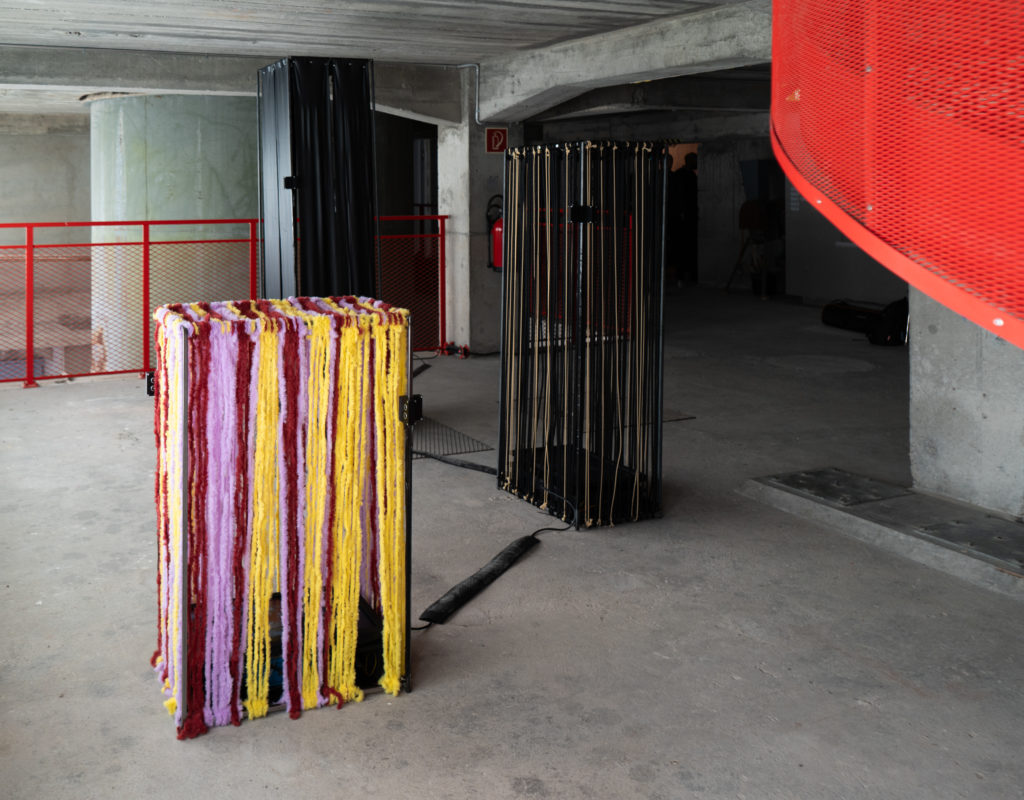
The installation

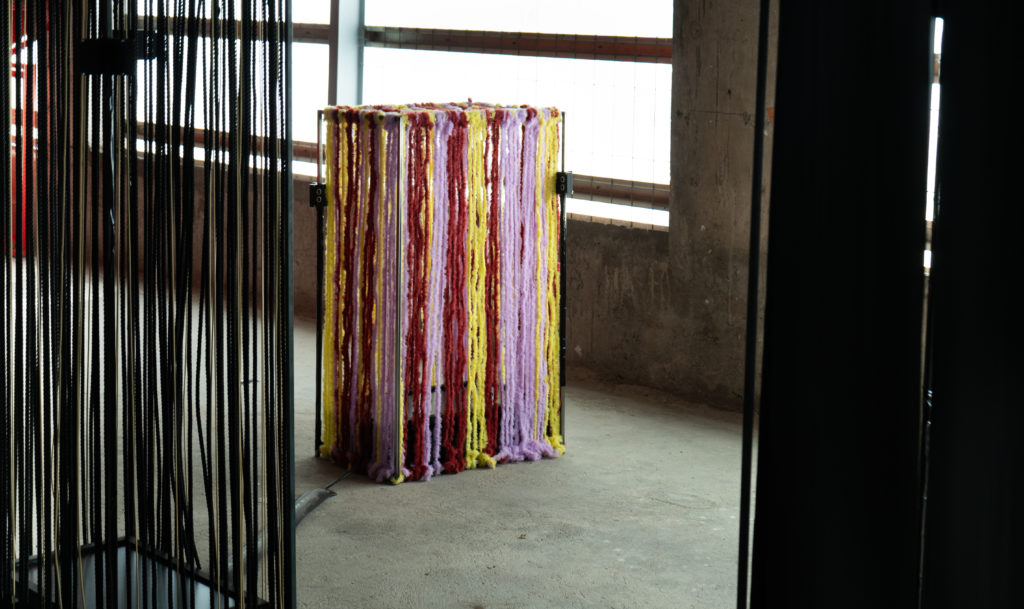
One of the cages

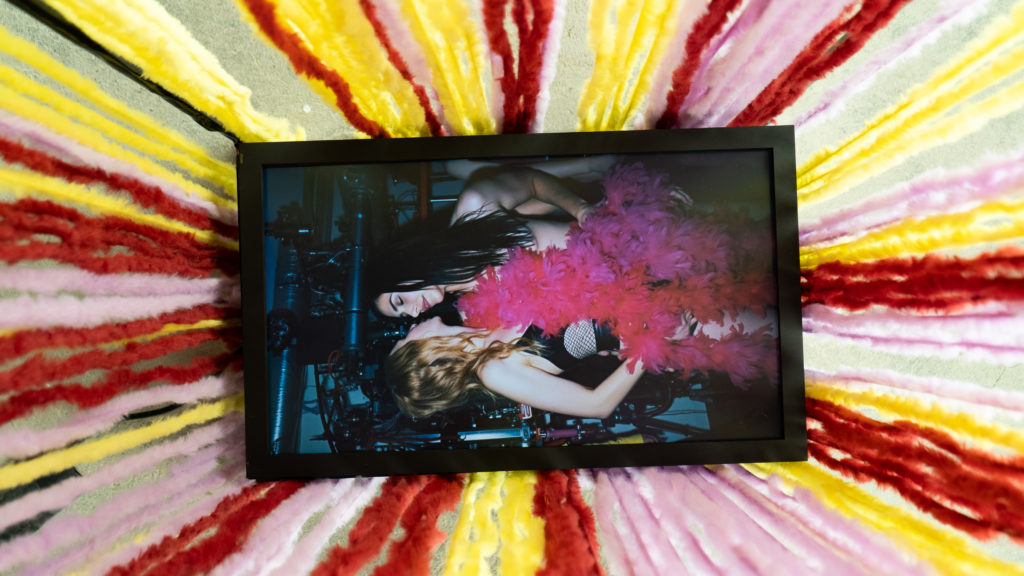

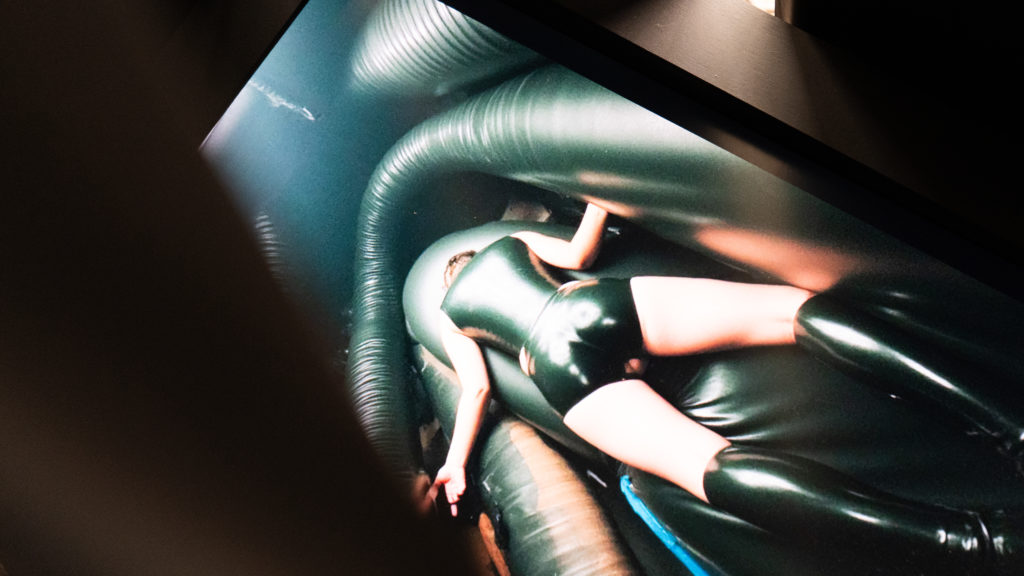

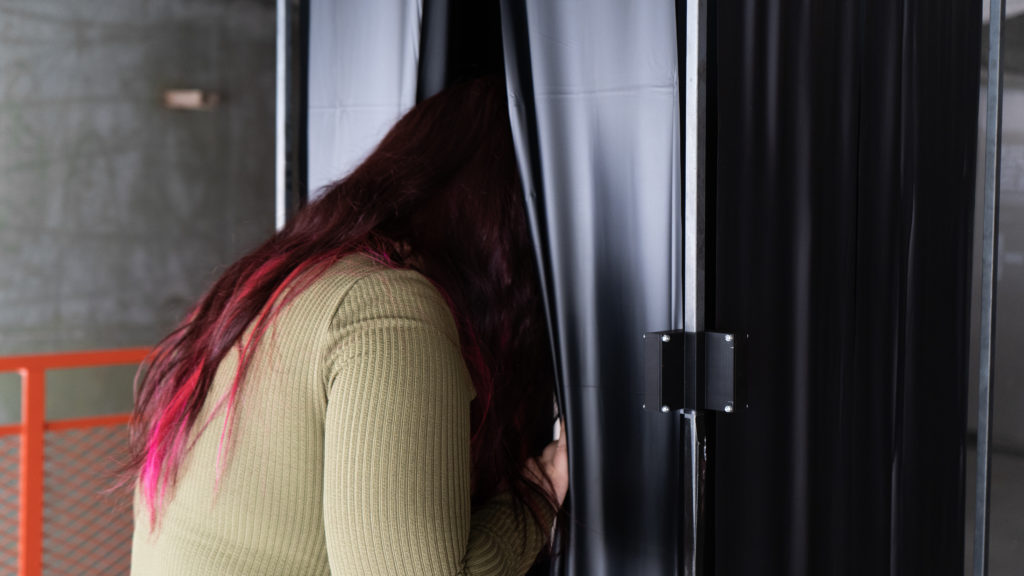
The user interaction
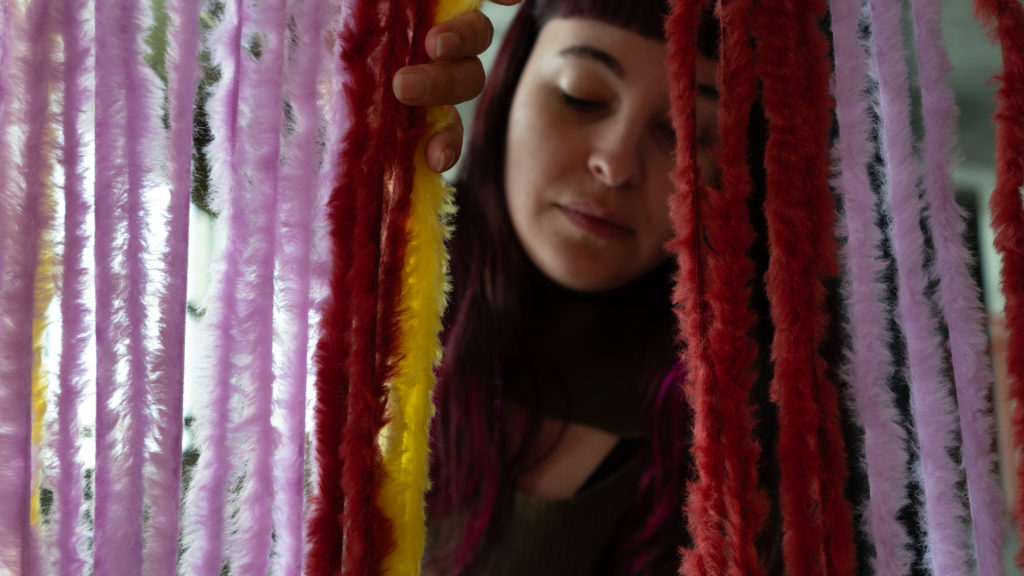
Concept
Liminal is an interactive installation that offers a safe space to approach BDSM practice through images and atmospheres far removed from the world of pornography. The experience unfolds within three accessible cages, whose walls weave together iconic materials from the BDSM scene, such as ropes, latex and plush, evoking tactile and symbolic sensations.
Each cage welcomes the visitor by inviting him or her to make a gesture of discovery: looking out with the torso inside, as if peering through a window, an act that symbolizes the curiosity to observe an often hidden world. At the base of each cage, a screen displays evocative images that tell the dimension of desire, consent, and power play. Immersive sounds and lights amplify the sensory experience, creating an intimate environment in which to explore BDSM openly, without preconceptions and outside mainstream narratives.
Research
Sensors
Even before we began to work out the concept, we explored the world of sensors so that we could understand their function and potential in our project.
We started with sensors accessible through smartphones. This allowed us to understand the wide range of sensors contained within a smartphone (some of which are contained only in the most cutting-edge smartphones) but more importantly, it allowed us to understand that, even simple, everyday interactions are possible through sensors.
Below is a table with the sensors found, divided by category.
- Pink: motion sensors
- Yellow: environmental sensors
- Green: position or navigation sensors
- Purple: biometric sensors
- Salmon: audio or vibration sensors
- Light blue: wireless or other sensors
We then focused on browser-accessible sensors, trying to understand and test whether they were indeed accessible by our browsers.
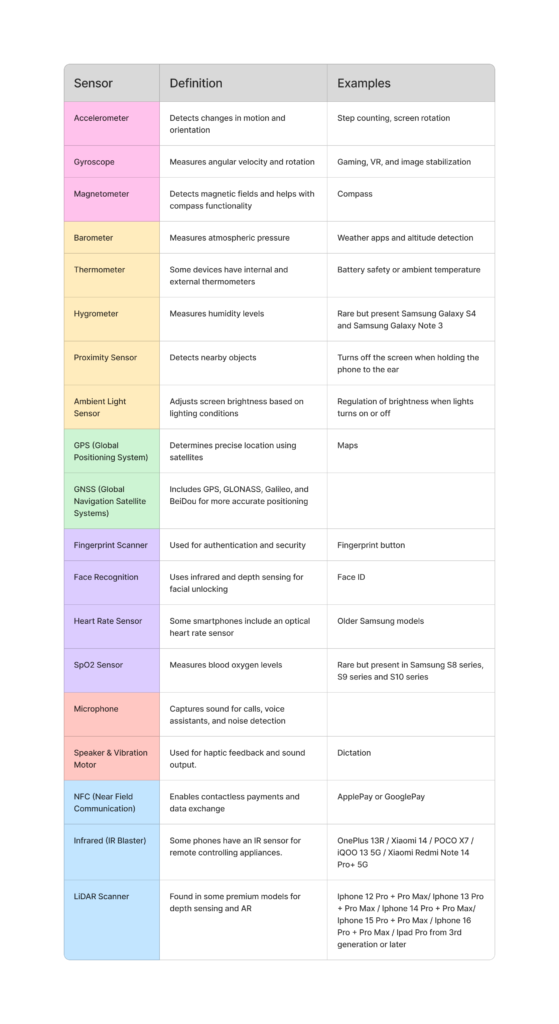
Sensors accessible from smartphones

Sensors accessible from browser
Finally, we investigated the possible gestures and interactions that a user can make with a smartphone or tablet
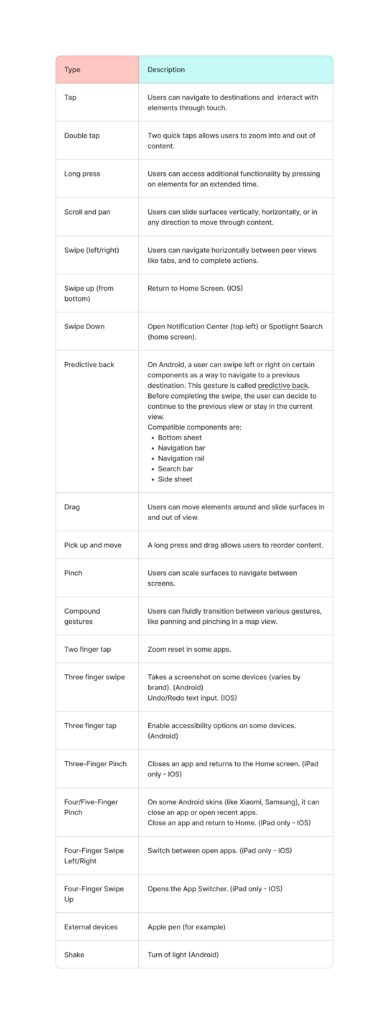
Possible interaction between user and smartphone/tablet
This research moment allowed us to better understand the sensors and their potentials so that we could exploit them in our project.
Archives
In addition to conducting sensor research, we focused on the archives so that we would have visual references for a possible concept. Below is a list of the most interesting and peculiar archives we found.
Taxonomy of occlupanids
The Holotypic Occlupanid Research Group (HORG) is a semi-humorous research organization dedicated to the taxonomy of bread clips, termed occlupanids. While primarily focused on plastic clips, it began cataloging paper-based ones in 2022. Its classification system has been cited in medical journals due to cases of accidental ingestion. HORG combines humor with genuine research and accepts mail-in submissions of rare specimens. The archive contains the entire taxonomy of occuplanids. This archive could have been an interesting opportunity to create a fun and imaginative narrative.
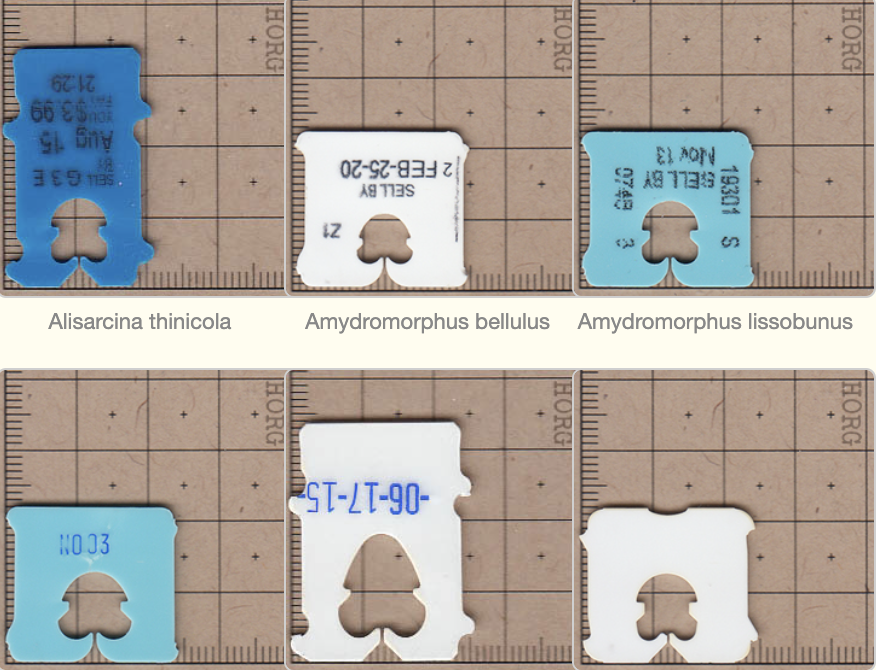
Examples of occlupanids
Toy stories
Toy Stories by Gabriele Galimberti is a photography project that explores childhood and cultural differences through children’s toys. Over two years, Galimberti traveled to dozens of countries, capturing portraits of children alongside their most cherished toys. The images highlight contrasts in wealth, lifestyle, and values while revealing the universal joy and imagination that toys inspire. Through these intimate and playful compositions, Toy Stories offers a global perspective on childhood and material culture. We found this archive of photographs interesting because it would give us the opportunity to create an installation that would allow us to reflect on important issues such as inequality
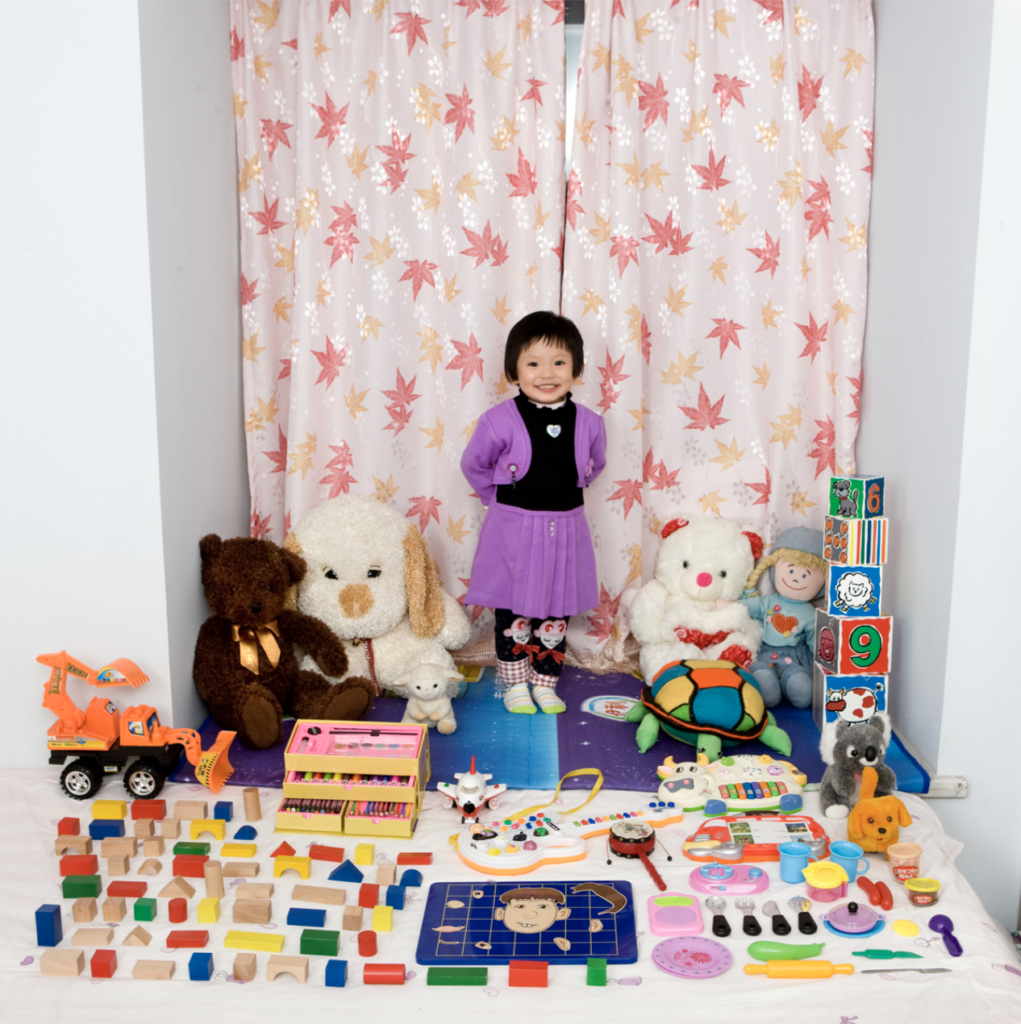
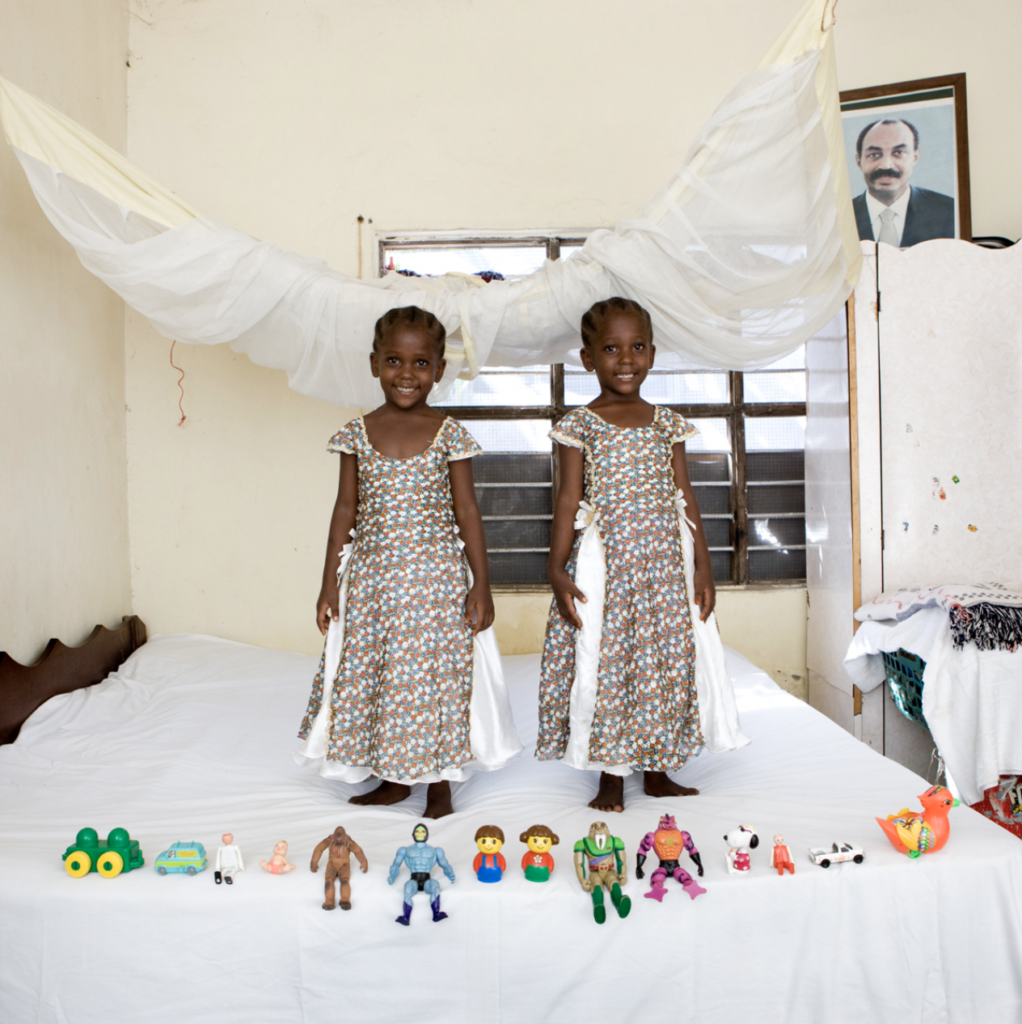
The Ameriguns
The Ameriguns by Gabriele Galimberti is a photography project that explores the deep-rooted gun culture in the United States. Through striking portraits, Galimberti captures American gun owners—ranging from families to individuals—posing with their extensive firearm collections. The project examines the cultural, historical, and personal significance of gun ownership in the U.S., highlighting the country’s unique relationship with firearms while prompting reflection on issues of identity, security, and power.


Selected Archives
In developing the concept we actually used multiple archives of images collected from different instagram profiles.
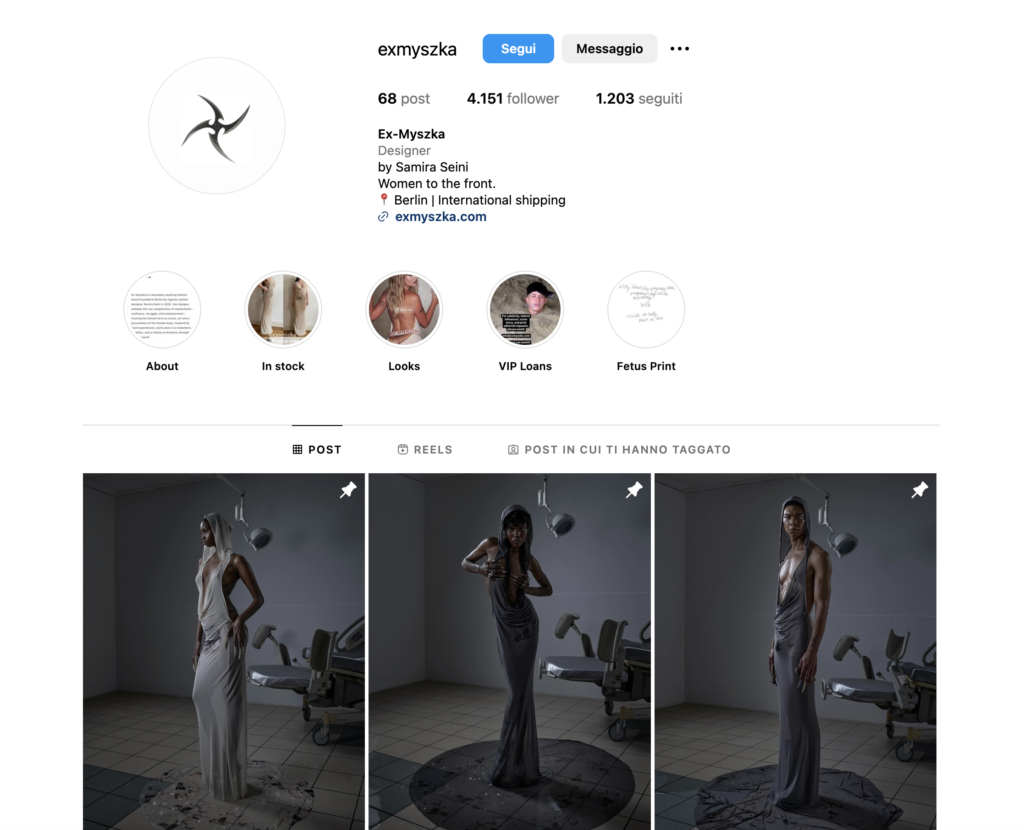
IG profiles: exmyszka

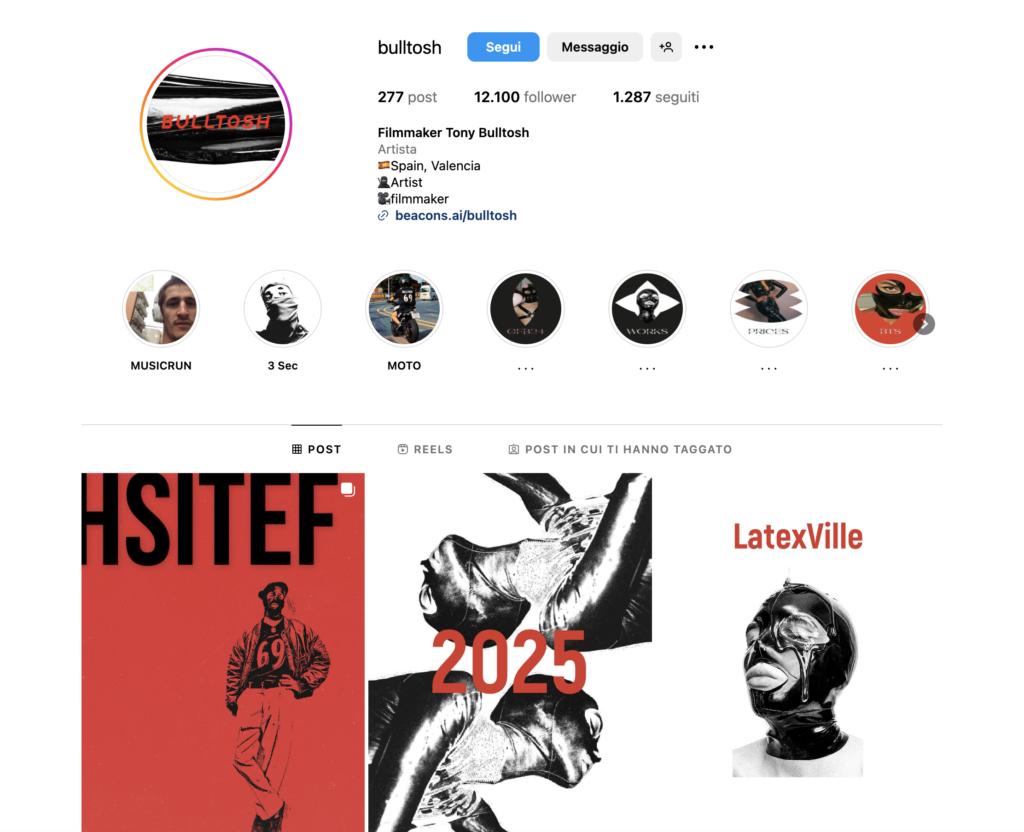
IG profiles: bulltosh
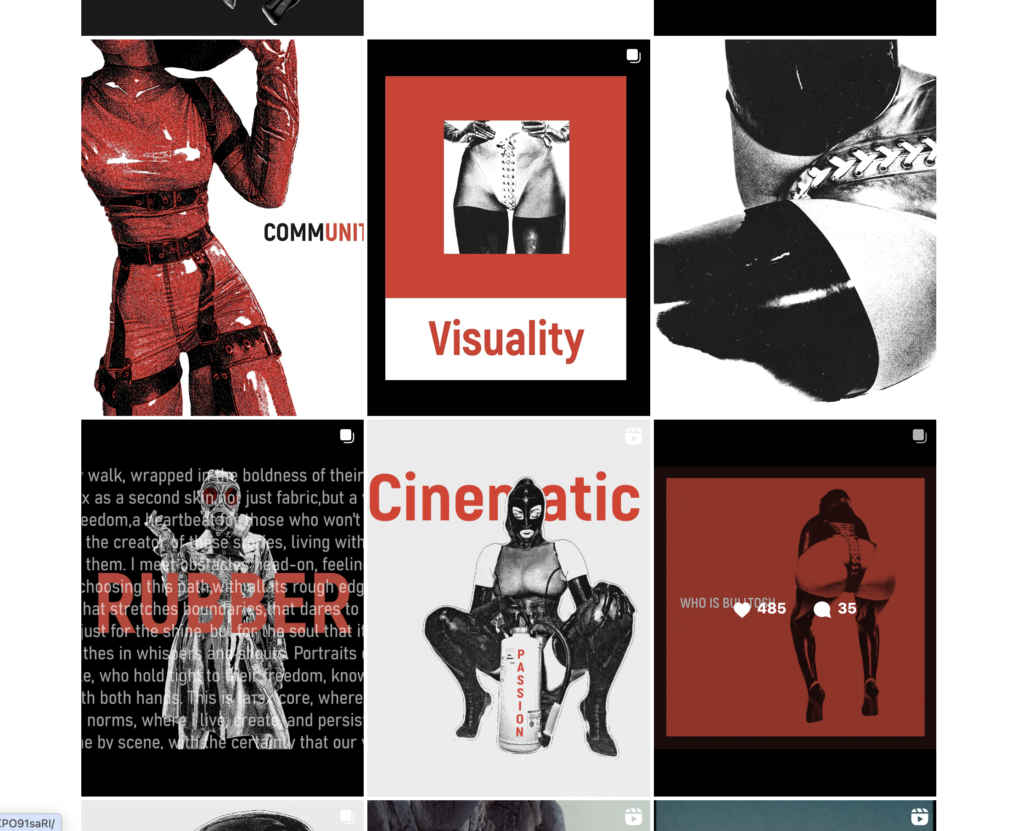

IG profiles: gummybeargang_bang
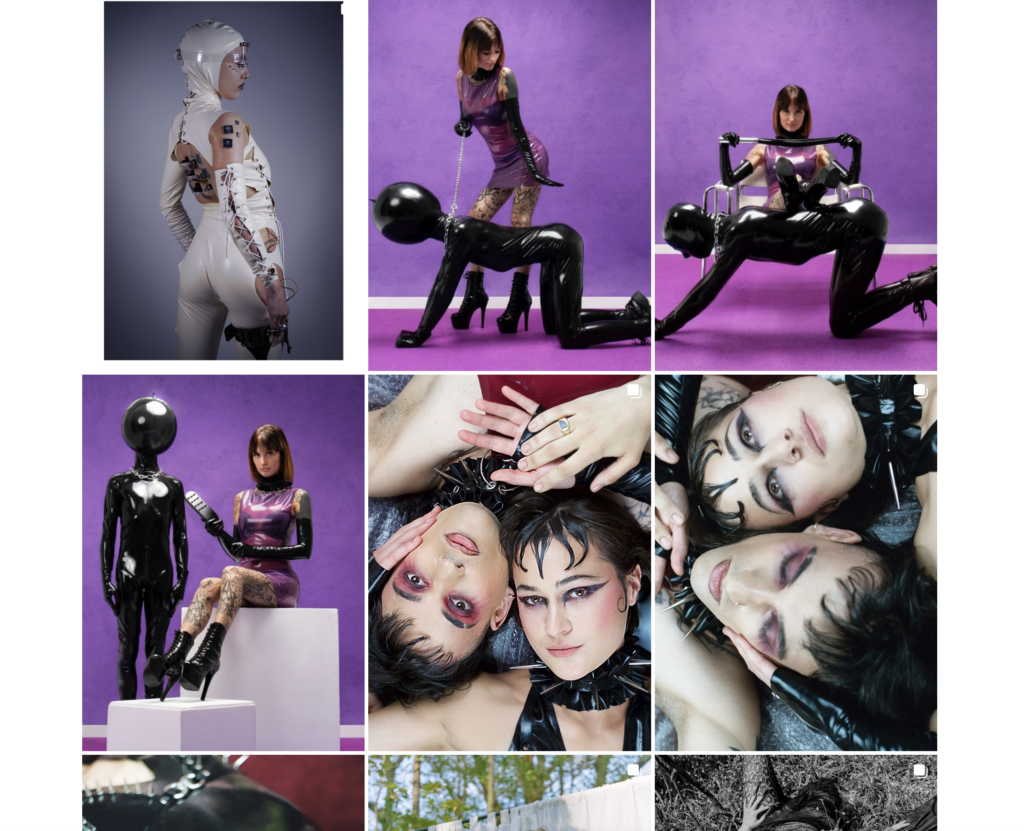

IG profiles: tori_shiro
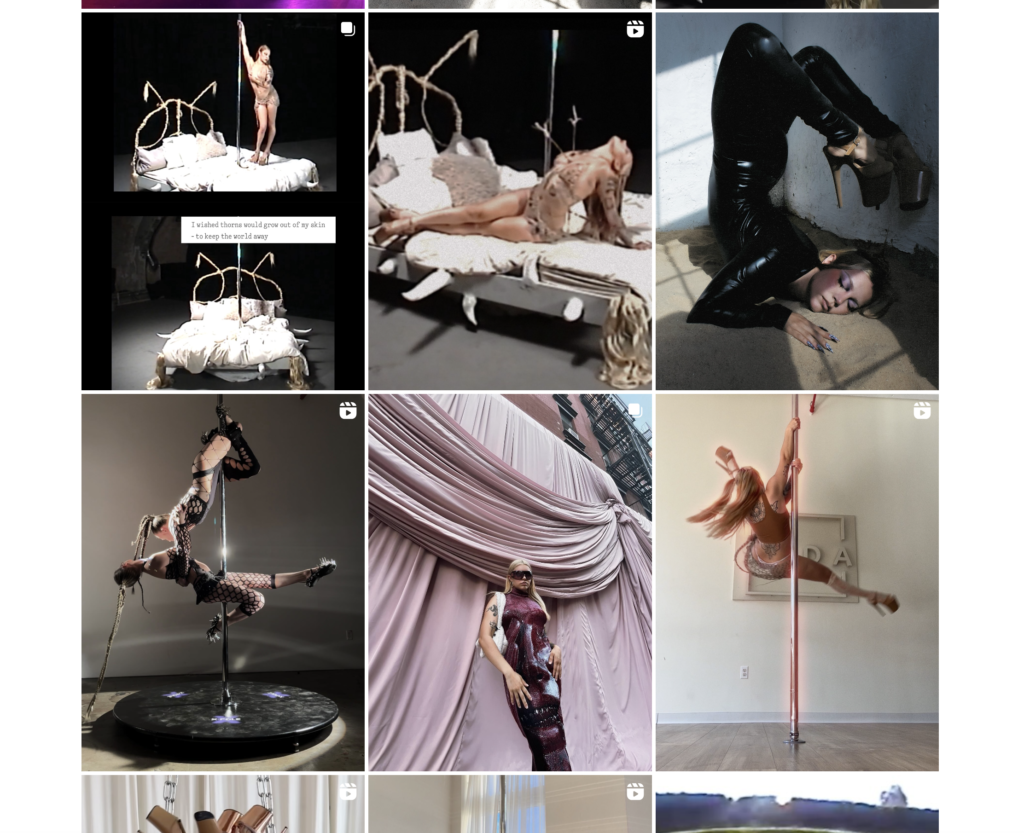
Ideas generation
Defining the final idea was a tortuous path. We initially tried to come up with ideas for an installation that could be provocative and deal with sensitive issues. This led us to think a lot about technology and possible interaction but not a solid concept. We report here some of the brainstorming done in groups with ideas that were discarded.
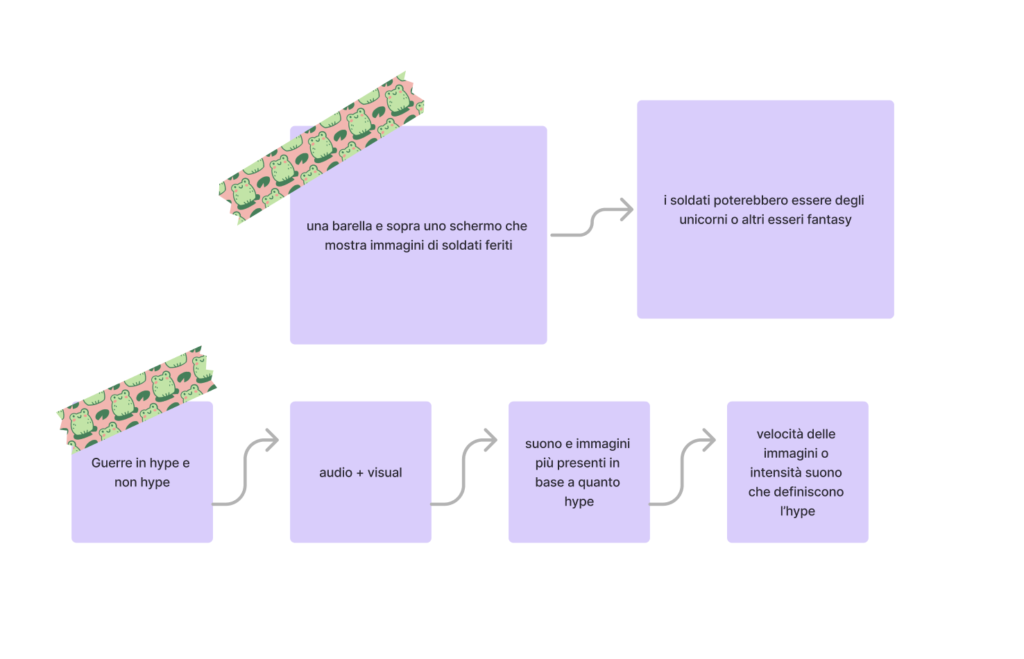
First brainstorming stage

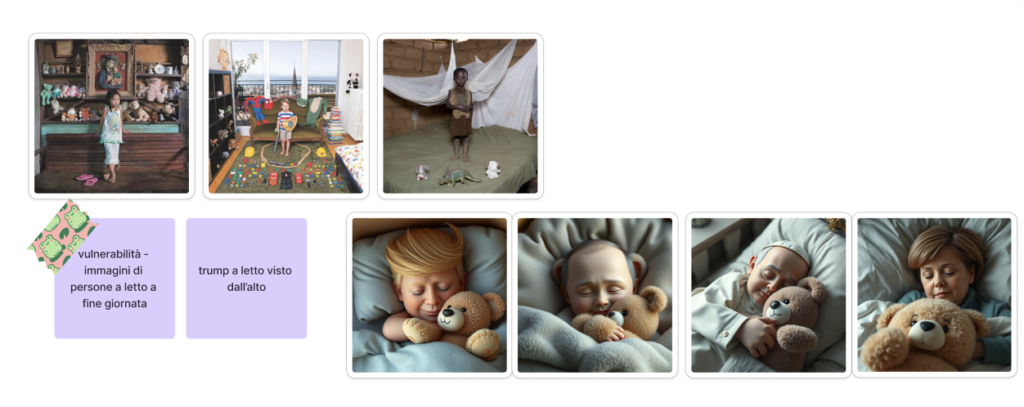

Second brainstorming stage
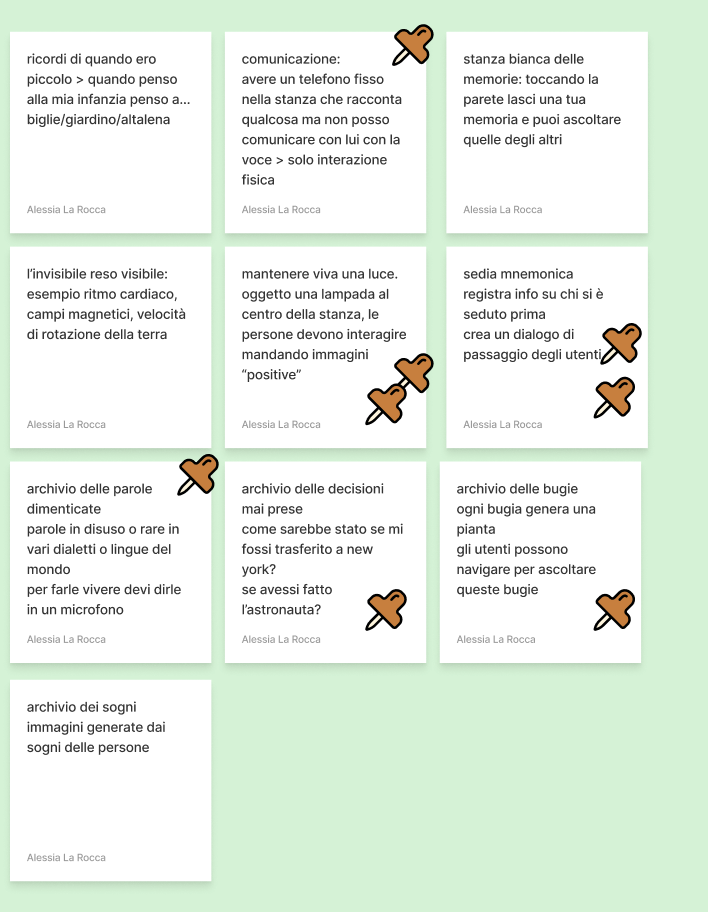
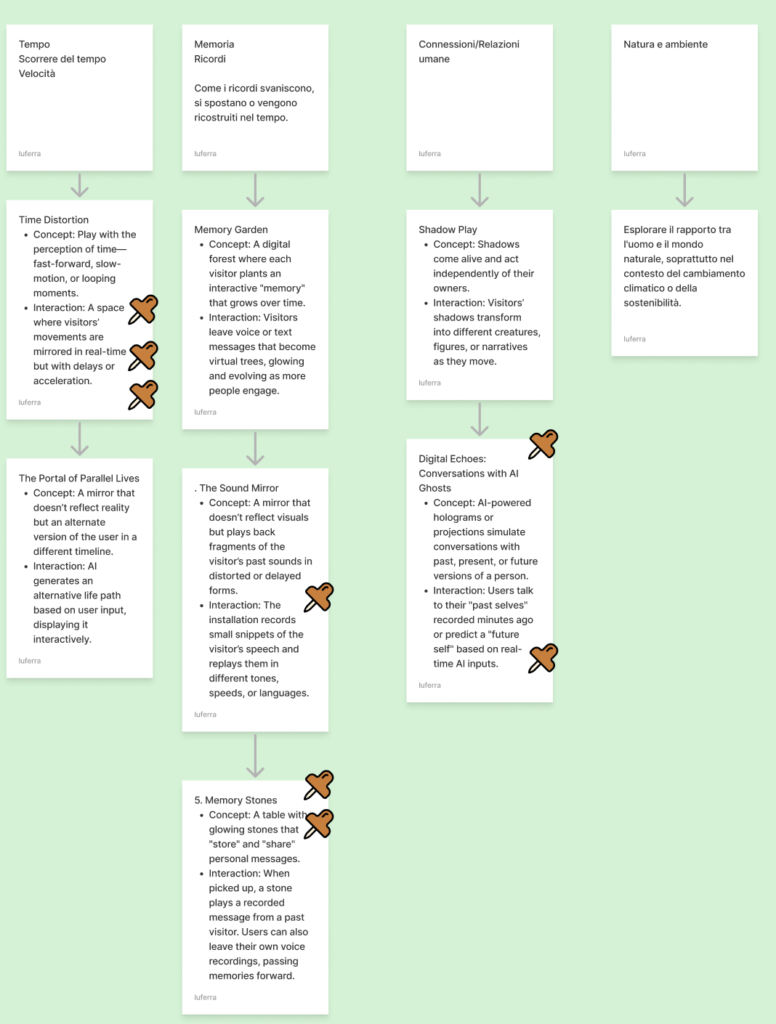
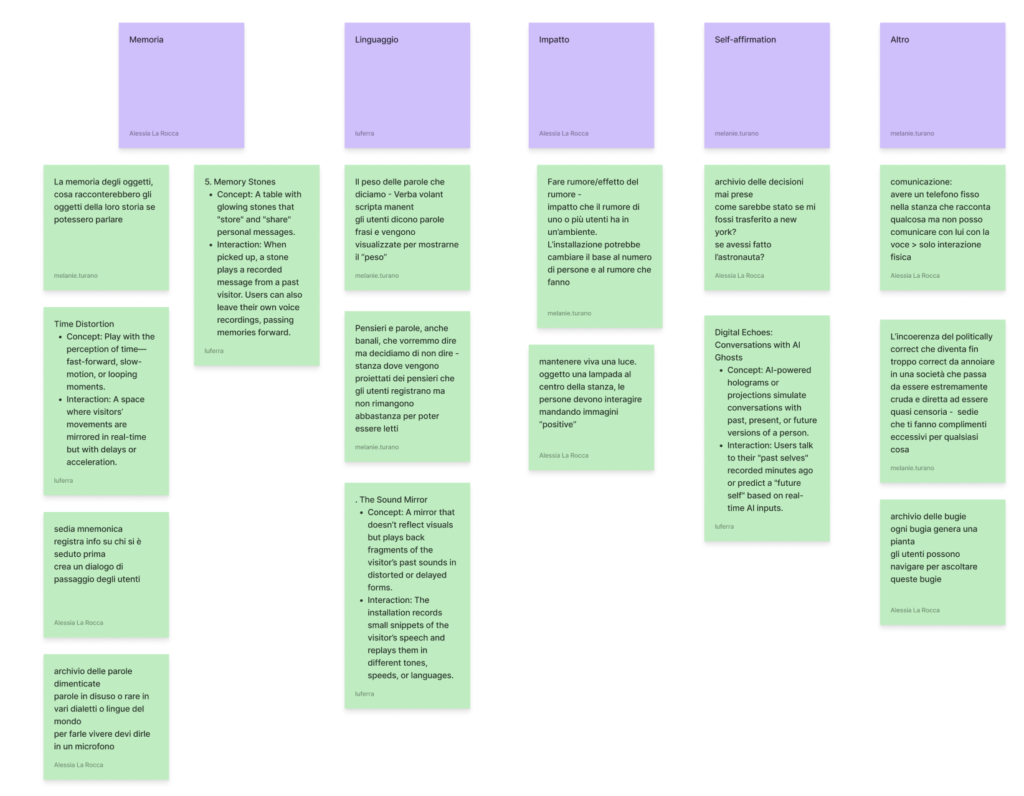
Third brainstorming stage
Final idea
The final idea came with the discovery of archives (Instagram profiles shown above) in which the predominant theme is BDSM. But what is BDSM?
“The term BDSM identifies the wide range of relational and/or erotic practices that allow for the sharing of fantasies based on pain, power imbalance and/or humiliation between two or more consenting adult partners who derive satisfaction and pleasure from these
BDSM is in fact an acronym that stands for: Bondage & Discipline (B&D), Domination& Submission (D/s or Ds), Sadism (S) and Masochism (M).BDSM has as its basic rule the full consent of both parties. These are erotic practices that although sometimes to an outside eye they may appear as acts of violence are instead desired by all involved. In BDSM, for it to be called such, there is no coercion, compulsion or plagiarism.”(Wikipedia).
Both the topic and the archive intrigued us, leading us to wonder what the motivations might be for why people are drawn to BDSM-related sexual practices.
Thus, the installation is designed as a place of discovery, of curiosity about a topic that is still bound by prejudices. The installation consists of 3 cage-like structures, covered with 3 different materials, materials all used in BDSM. The user is invited to physically enter with his or her body inside the cages in order to take in images scrolling on a monitor placed at the base of the cages. Through interaction, the user is invited to concretely enter into the theme to experience the mood of the experience without viewing pornographic content or content that may result in traumatic and unpleasant.
Dataset selection of images
To create the visual content for Liminal, we designed a process that balanced AI-generated imagery with careful artistic curation. Our goal was to develop evocative visuals that captured the essence of BDSM aesthetics while moving away from mainstream pornographic representations.
Image Training
We began by assembling a dataset of images sourced from Instagram profiles and other online repositories. These references were chosen based on specific visual characteristics we wanted to preserve in our final images, such as lighting, textures, and overall atmosphere. Rather than relying on generic datasets, we sought out compositions that resonated with the themes of desire, consent, and power dynamics—core elements of the installation.
Once we had compiled the dataset, we uploaded it to Replicate to train a custom AI model capable of generating new images in a similar visual style. In the initial stages, our prompts were overly precise, attempting to dictate specific details about poses, expressions, and compositions. However, this approach proved too restrictive, limiting the AI’s ability to generate nuanced and compelling visuals. We adjusted our strategy, refining our prompts to focus more on overall image quality and mood rather than rigid compositional constraints. This shift allowed the AI more interpretative freedom, resulting in a richer variety of outputs.
generation_training

generation_prompt
Image Selection
To maintain coherence with the physical elements of the installation, we structured the generated images around three primary materials: latex, rope, and feathers. These materials play a crucial role in the tactile experience of Liminal, and we wanted the digital visuals to reinforce their symbolic and sensory significance. After generating a large number of images, we engaged in a meticulous selection process, discarding those that did not align with our artistic vision or lacked the desired aesthetic impact.
generation_unselected
Final images
The final curated selection is divided into the three material categories, each offering a distinct visual interpretation of BDSM. By using AI as a tool for creative exploration rather than mere automation, we have crafted a collection of images that reflect the intimate, textural, and atmospheric qualities of the BDSM world, presenting it in a way that is both abstract and immersive.
generation_selection_latex
generation_selection_rope
generation_selection_feather
Drive with the final images
Prototyping
Structures and materials
In order to figure out how to build the cages, we started with a smaller model that would allow us to figure out the best way to hold the structure together and how to attach the material to be able to cover them.
We first envisioned an “external” joint that would hold the structures together.
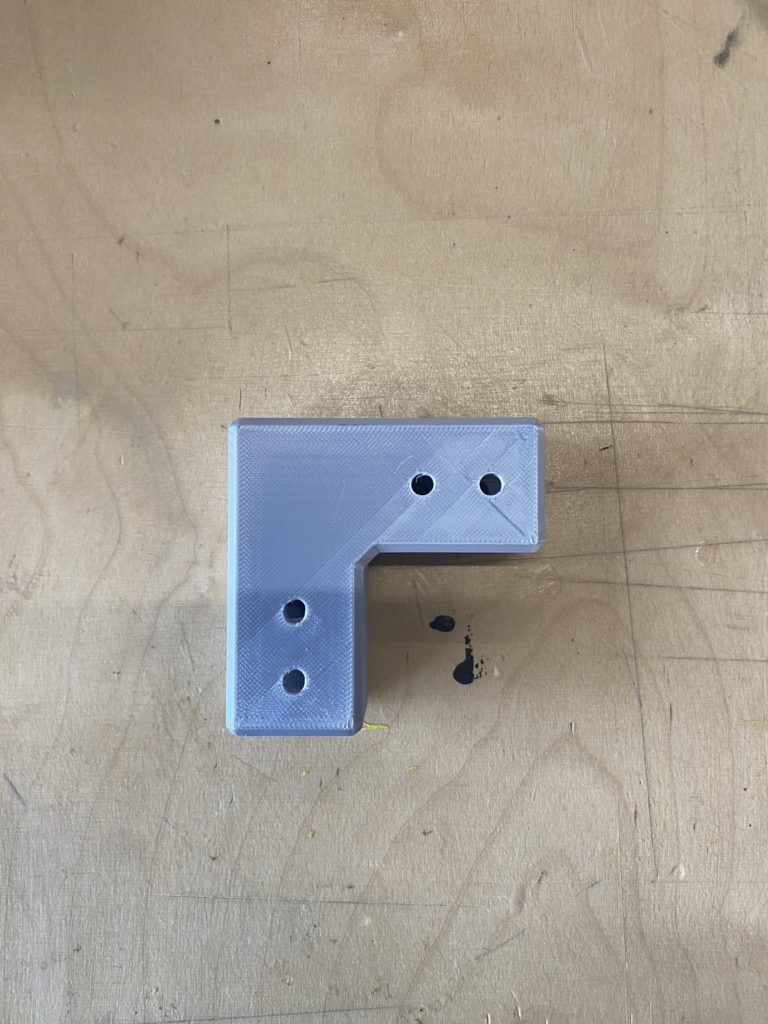
The 3D printed joint
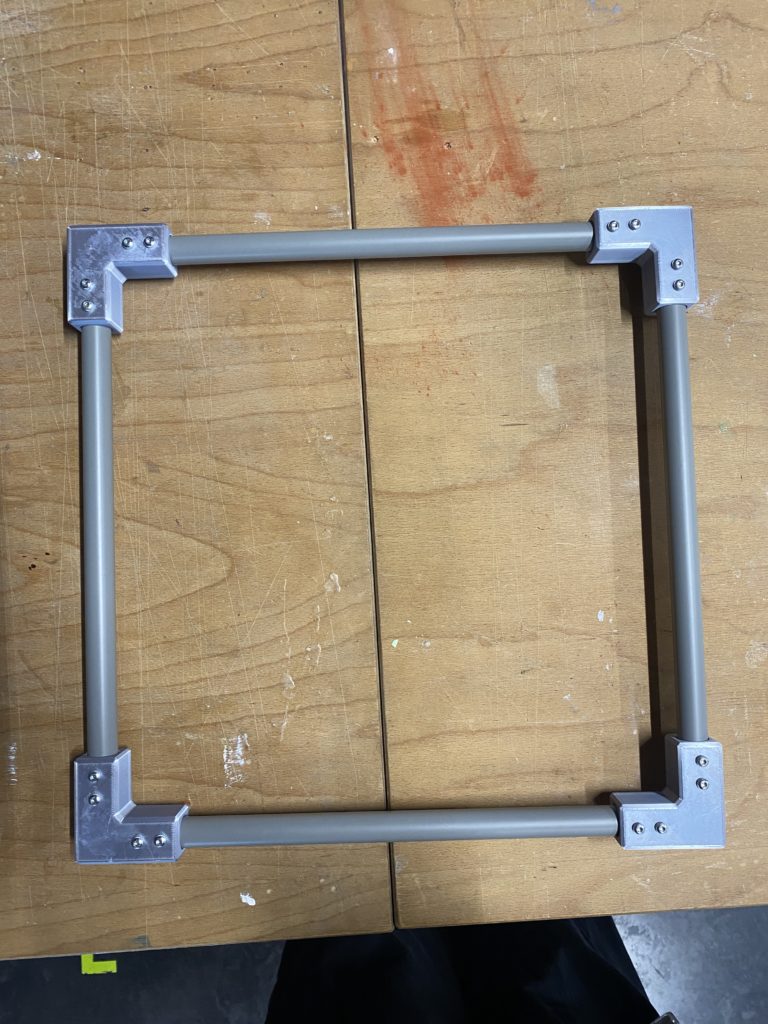
First test for the structure
These joints proved to be unsuitable both aesthetically and structurally. In order to make the structure stable, it would have been necessary to add nails by having to drill holes in both the joint and the metal laths, a step we would have liked to avoid in order to have fewer steps to take during construction and assembly.
In testing how to attach the materials, we found that the different materials chosen needed different ways to be knotted. In fact, none of the modes visible in the photo was actually used either because the metal lath needed to be pierced or because it was not strong enough or because it was too complex (as in the case of the knot).
The laths used for these prototypes are round and made of plastic. In order to have a better feel and consistency with the concept for the final installation, square and metal laths were used
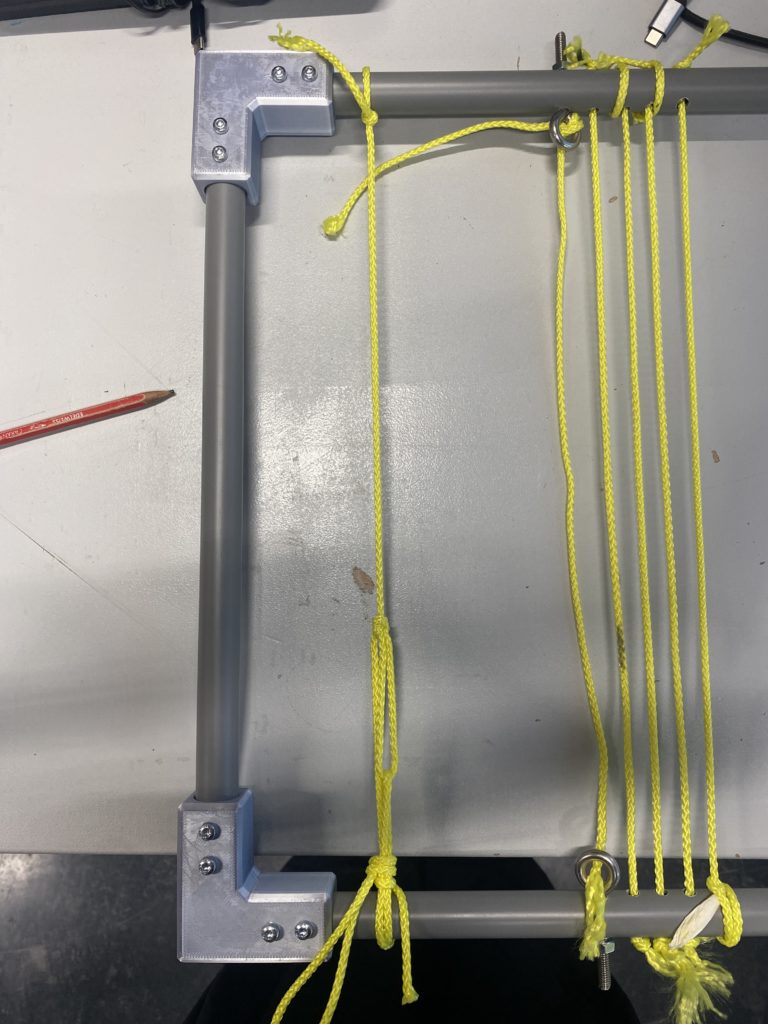
Different ways to attach materials
Sensors
Regarding sensors, 3 main sensors were tried: 3-axis accelerometers, motion or proximity sensors, and vibration sensors. The ones that proved most suitable (at least in the mode in which we placed them) were the motion/proximity sensors.
Accelerometers were not used because they were difficult to handle from an interaction standpoint accurately. Given the way they react they would be and activate been applied directly to the material lining the cages. The material being attached but not perfectly taut, to allow user interaction, could have unintentionally activated the sensor.
The vibration sensor, on the other hand, proved too insensitive to trigger the interaction mechanism.
In order to hold the motion sensors in place, we modeled corner structures, then 3D printed, and placed them on the sides. Four sensors were placed, one at each corner, so that the installation is usable from each cage in 360 degrees
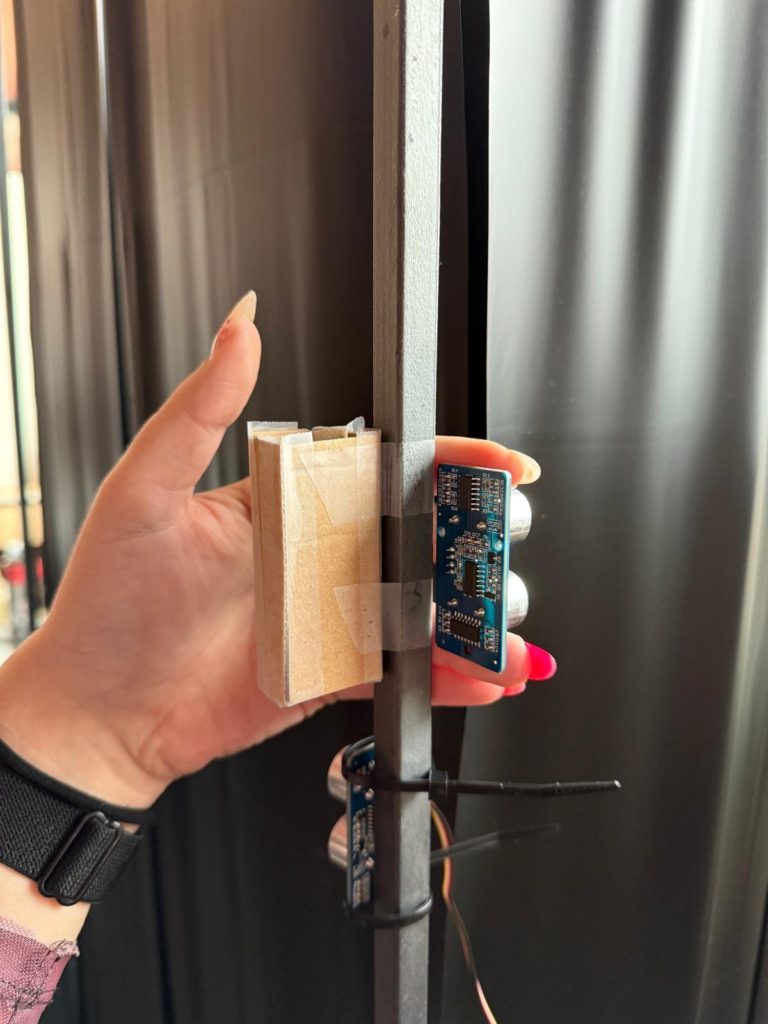
Corner structure prototype
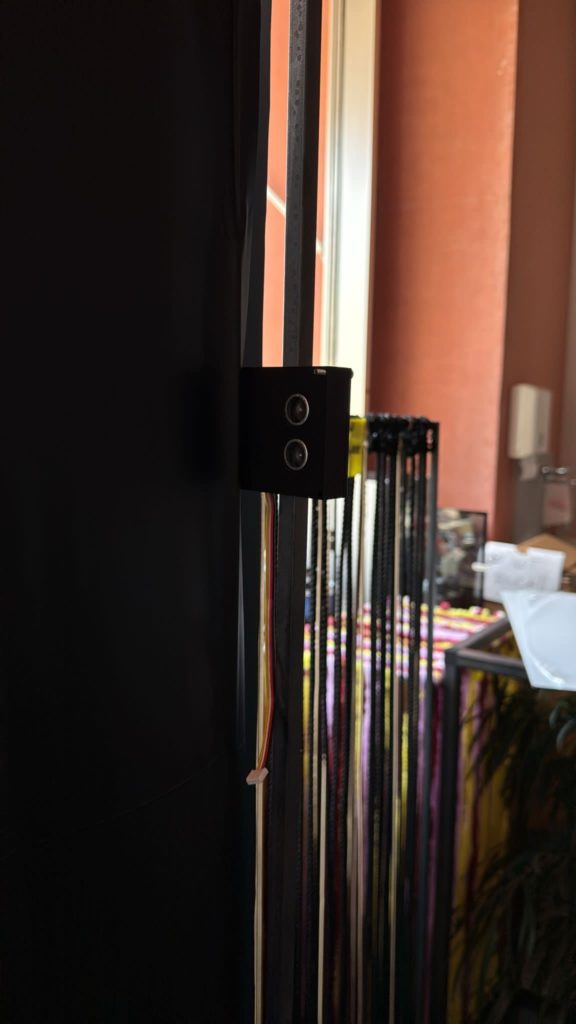
Corner structure with sensors
Final solutions
Soldering
We then opted to weld the various iron laths together. In this way, the structure is stable and consistent with the concept.
As you can see from the pictures we proceeded by first welding the base and roof of the cages. Next the heights were welded.
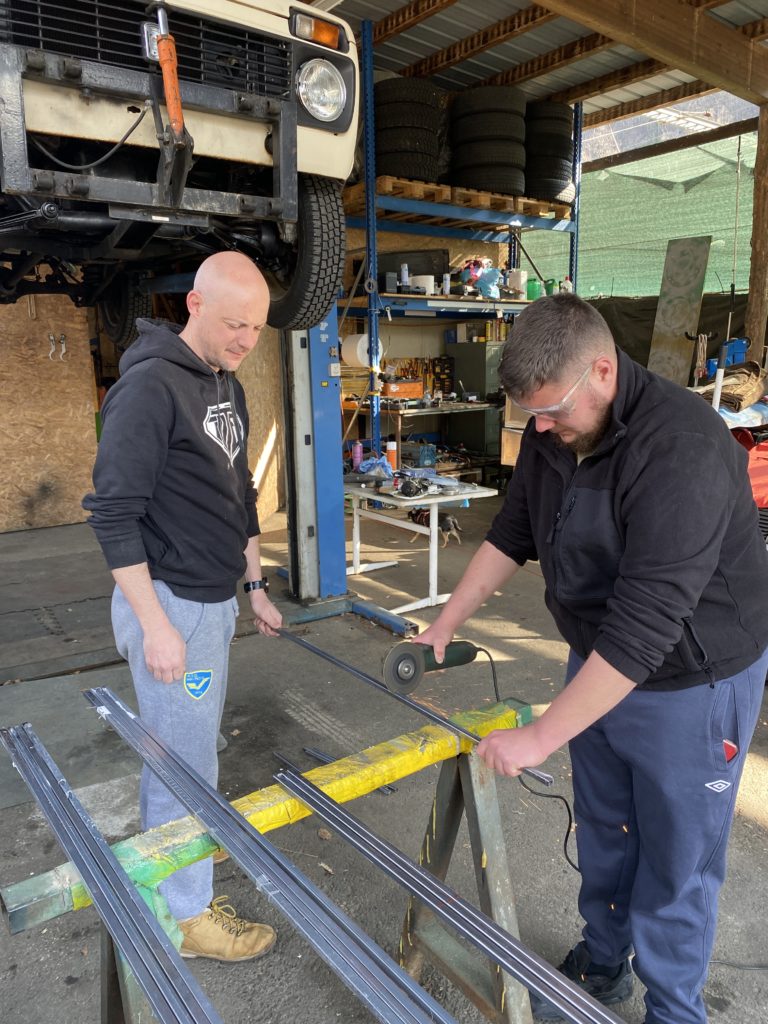
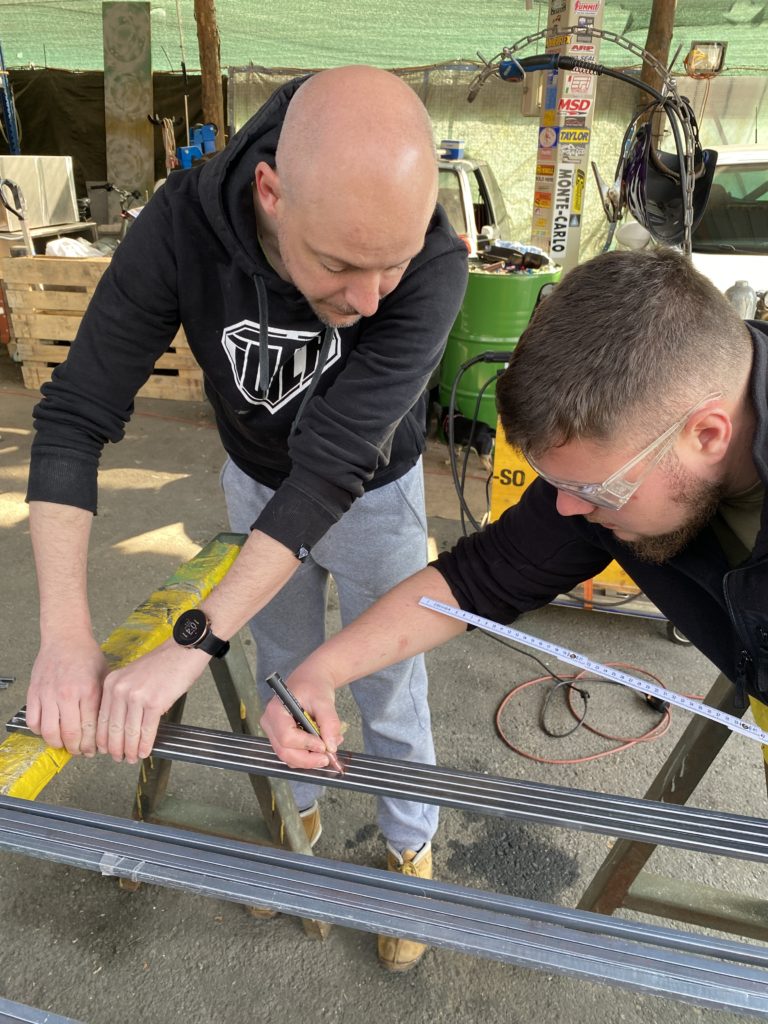
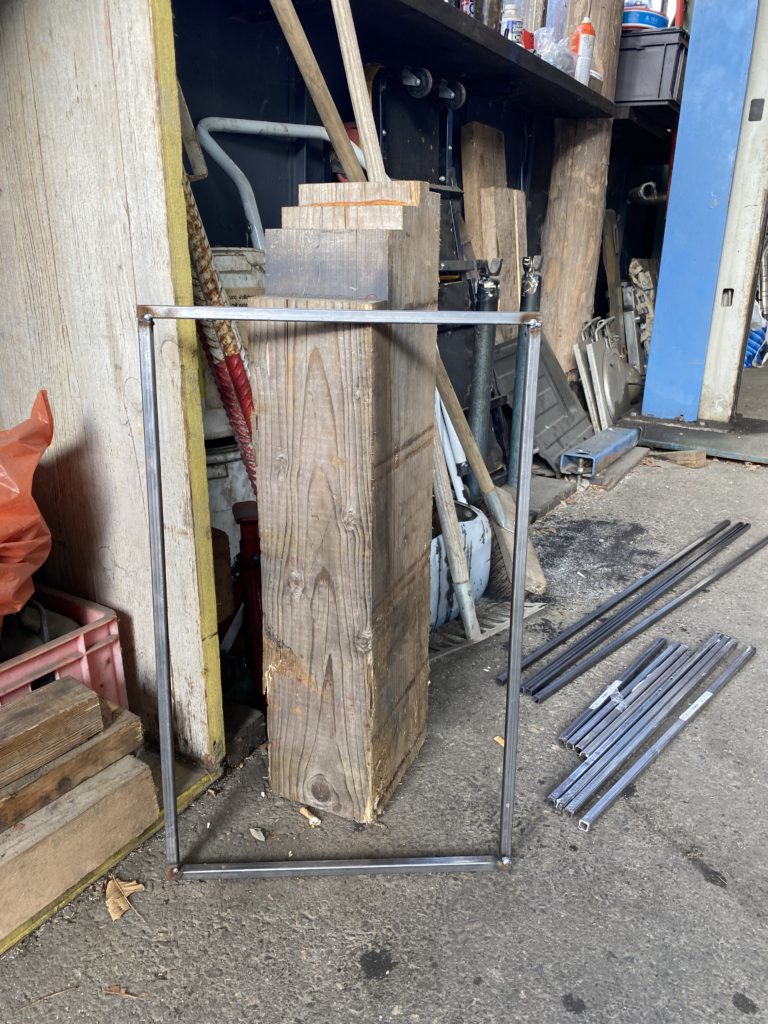
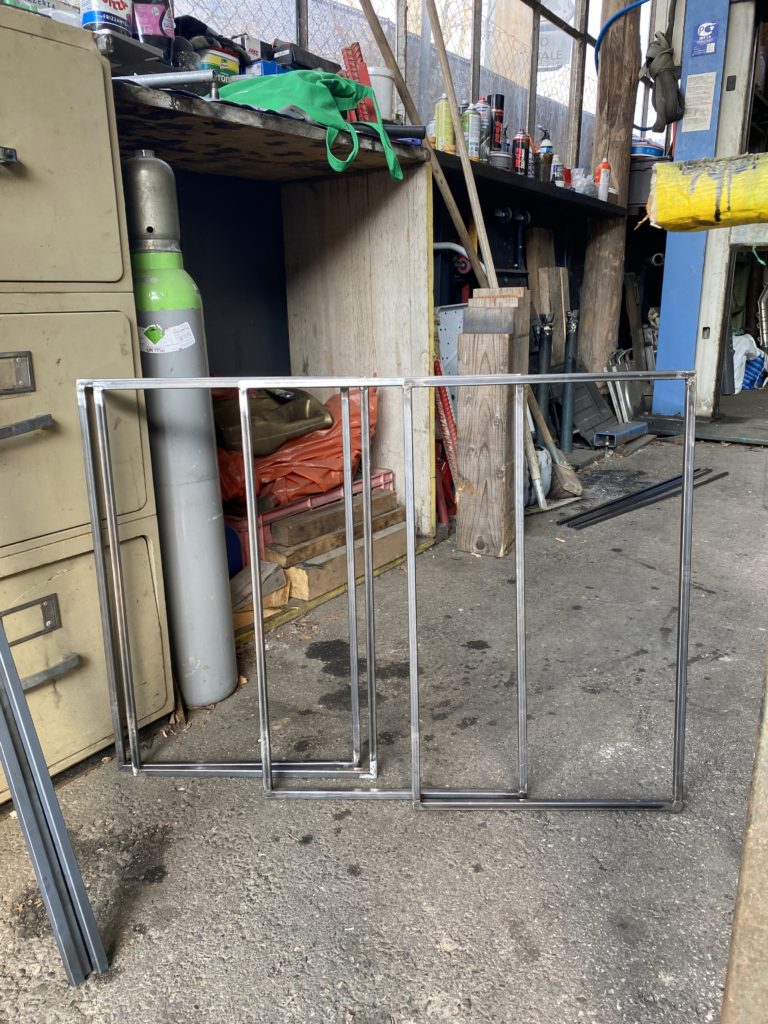
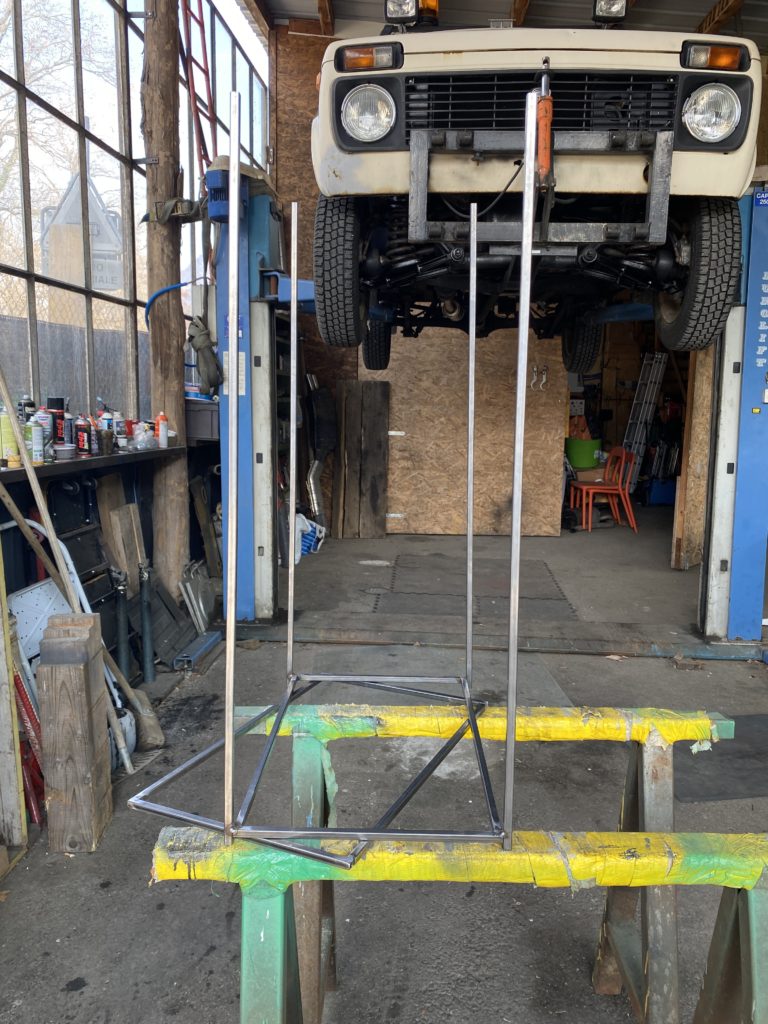
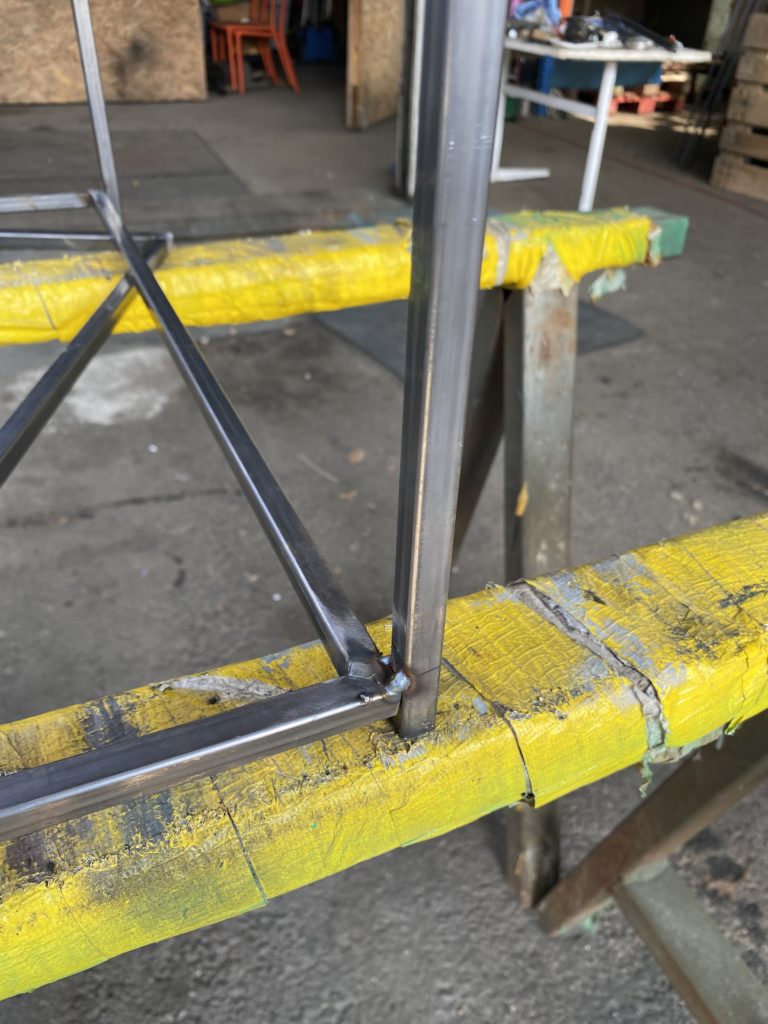
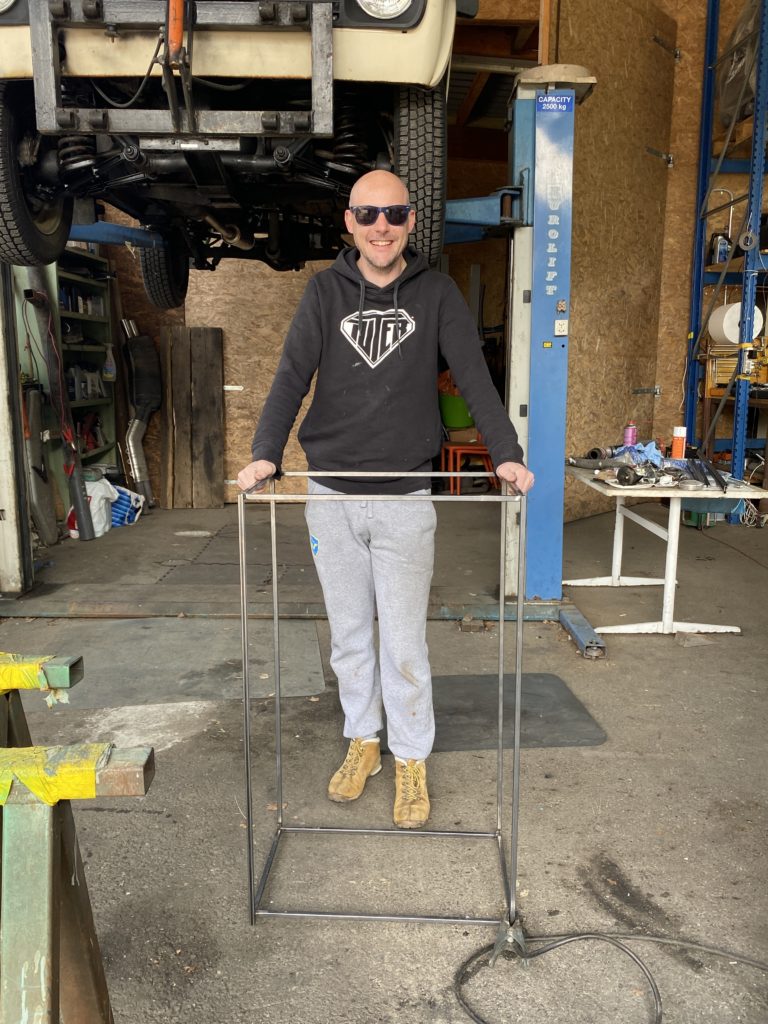
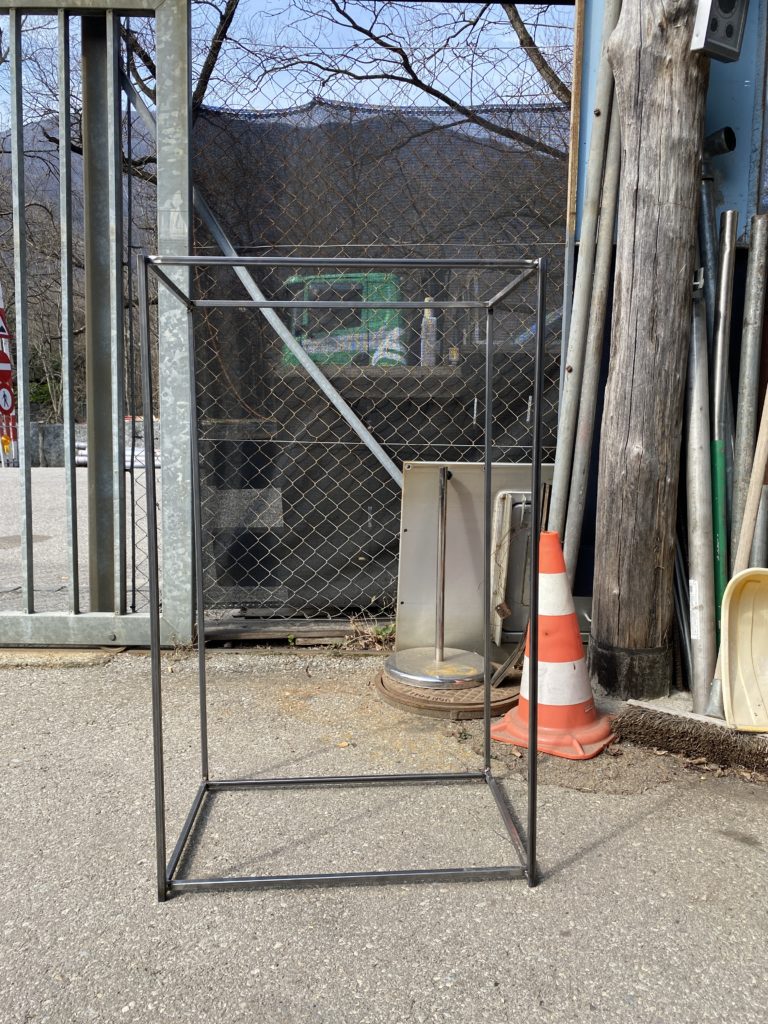
Materials
The choice of materials was considering several factors. First of all, cost. Other materials, such as chains, were considered but proved to be expensive. The sensory aspect was also central to the choice. The materials are three different materials that all have a different feel at the tactile level. This helps to diversify the different parts of the installation. Finally, the combination of these materials made it possible to create an installation consistent with its theme without making it too harsh
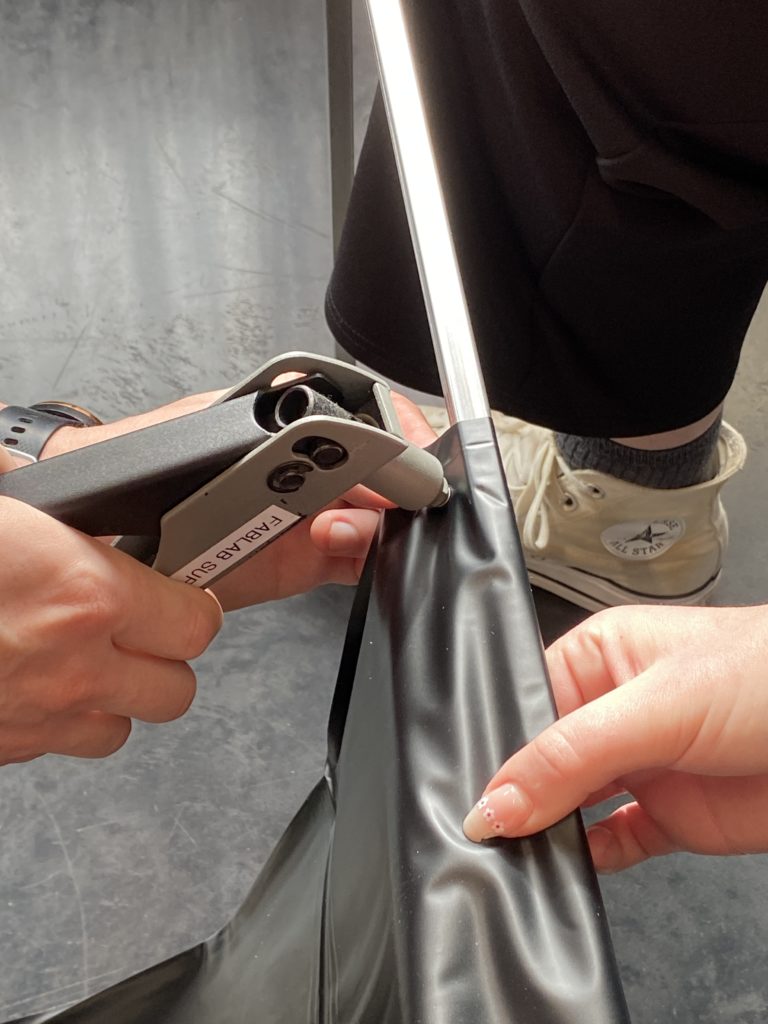
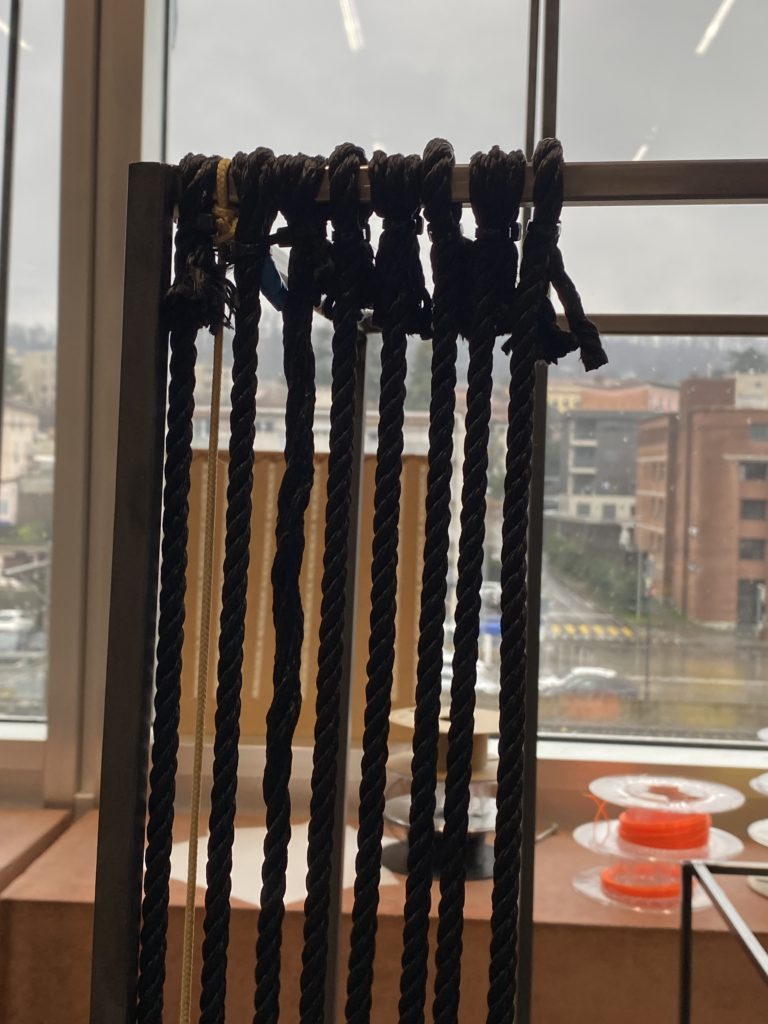
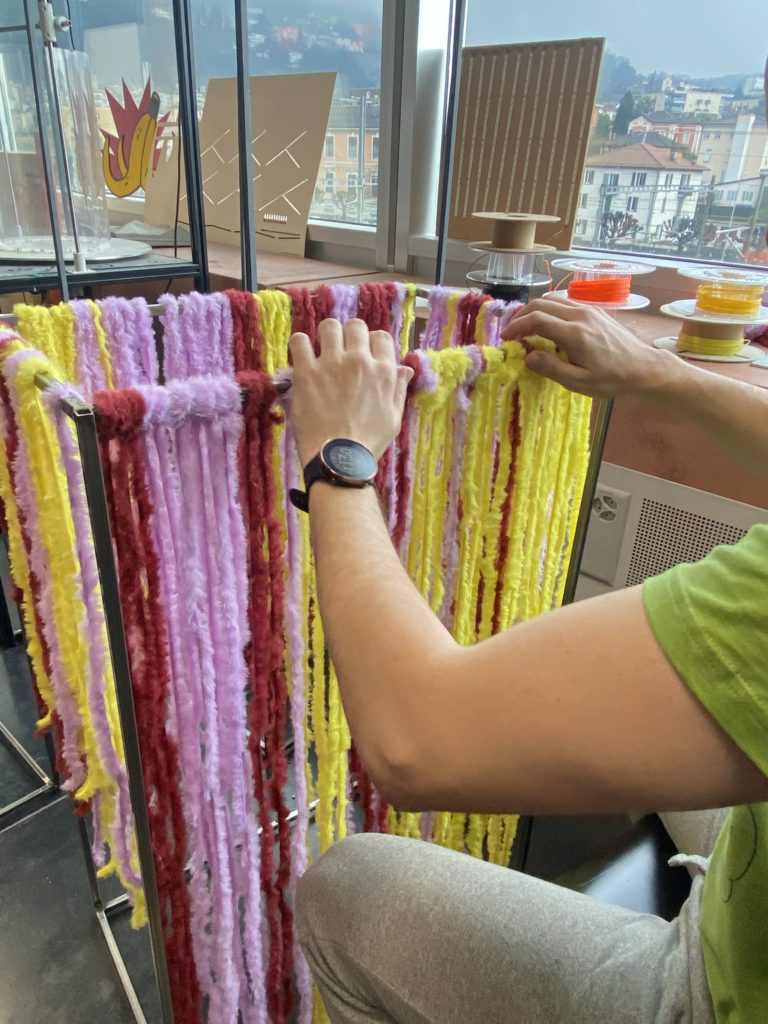
Boxes for the base
The boxes inserted at the base of the various cages were designed to support the screens (at the top) where the images are projected and opened on one side to accommodate all the electronics. They were then painted black to make them more sober.
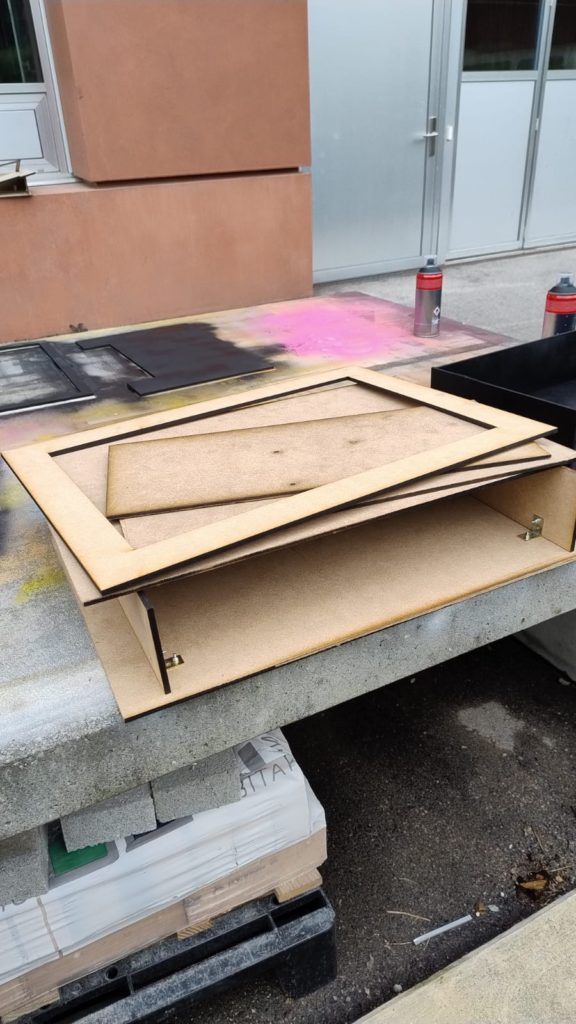
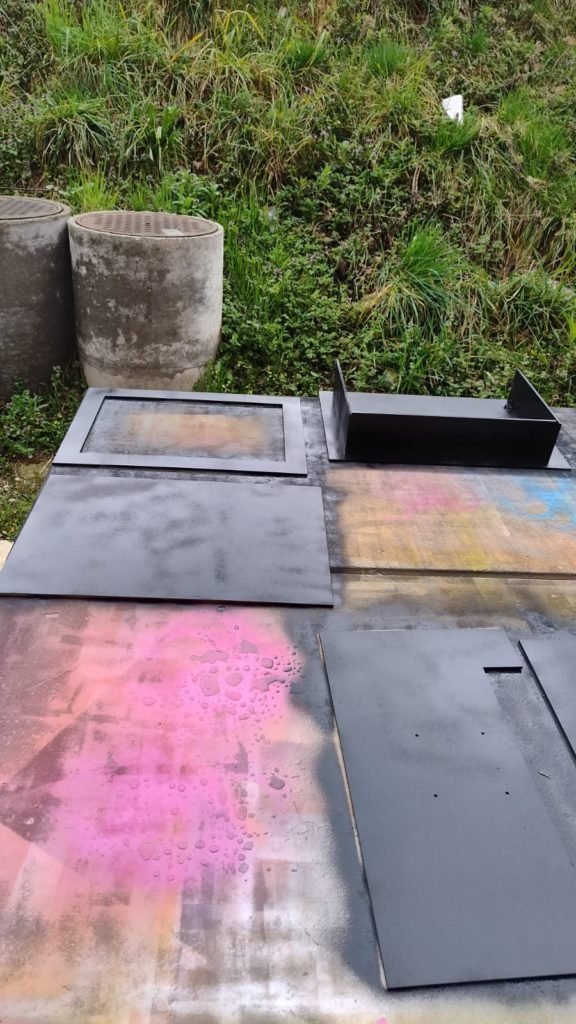
Technology
The electronics are composed of these elements:
Screen, Raspberry 3, Arduino nano 33 ble, Ultrasonic distance sensor
The sensor allows it to sense the presence of the user who “communicates” it to the Arduino. From the Arduino the information is passed to the Rasperry connected to the screen which triggers images and sound. There is also a bluetooth speaker and a power supply.
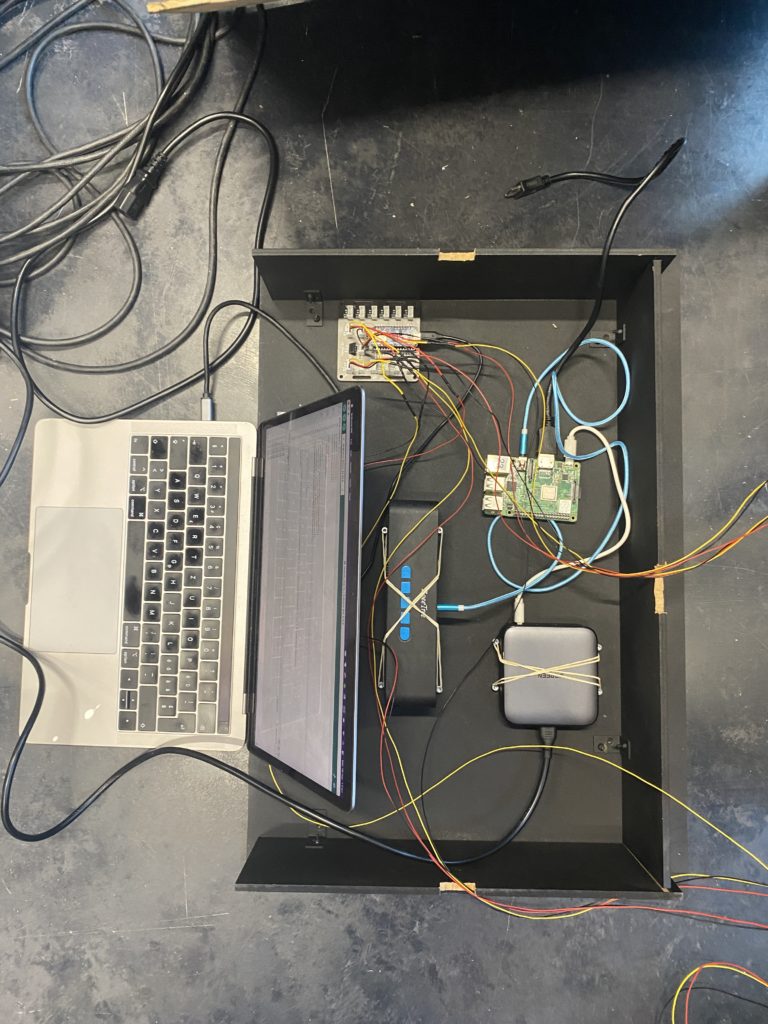

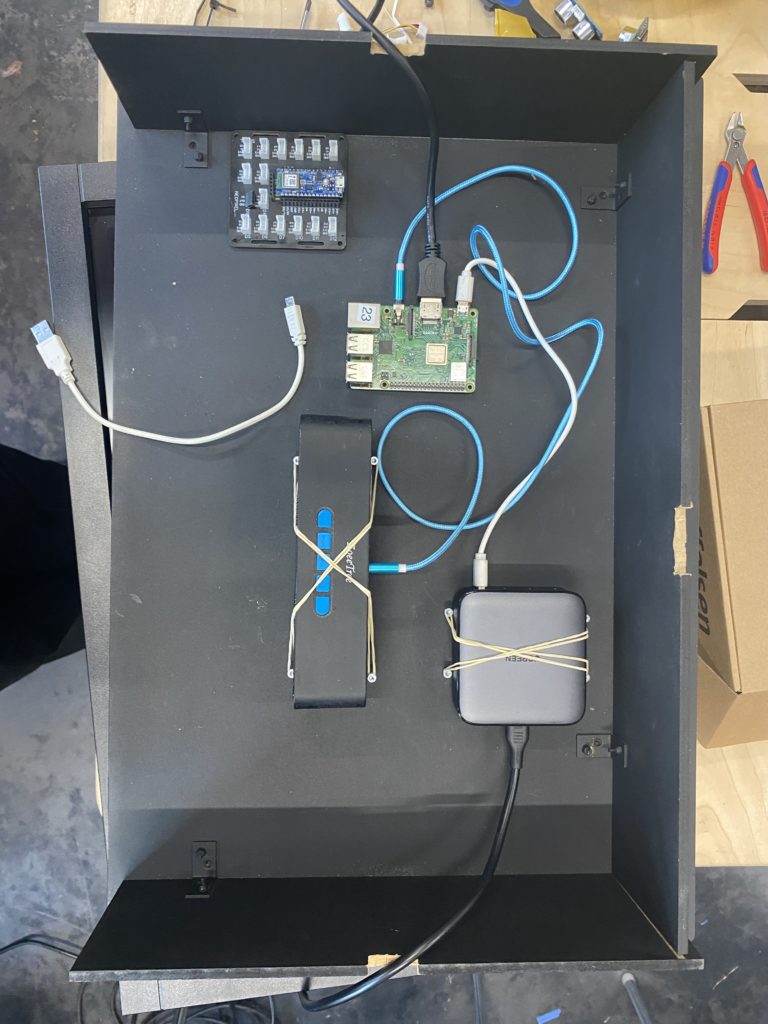
Installation
The space
The space used for the exhibition is the former Saceba Cement Factory.
The former Saceba cement plant in Morbio Inferiore, located in the Breggia Gorge Park, is a significant example of industrial archaeology in Switzerland. Founded in the early 1960s, the cement plant played a crucial role in the production of cement for important public and private works at the cantonal and national levels. The Torre dei Forni, the heart of the former cement plant and the site of the installation, has been transformed into a center for events and cultural activities.
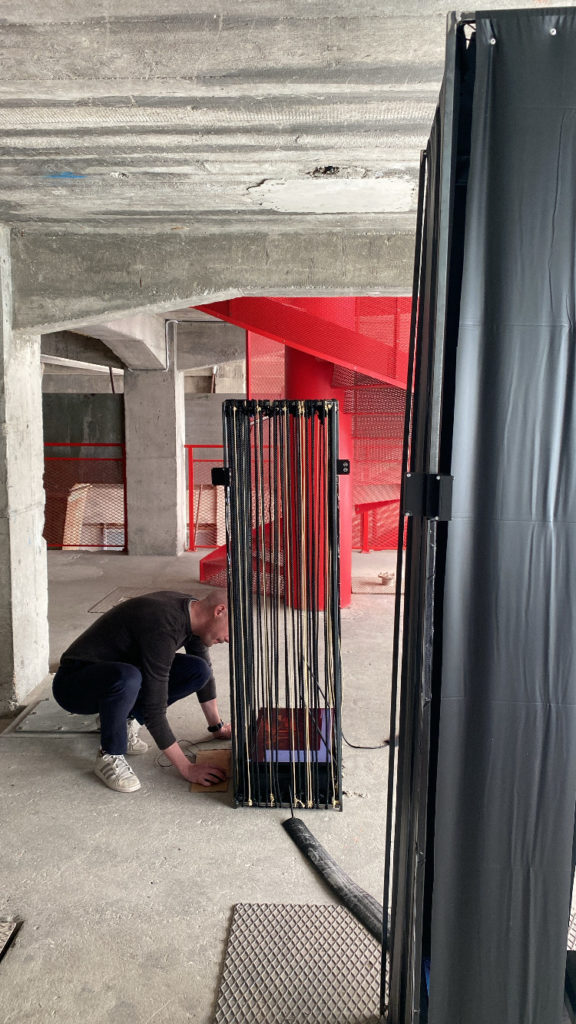
The three rooms
The three rooms created all represent a space within which to enter to discover the world of BDSM through images. Each is dedicated to a (material) theme, giving the opportunity to explore different kinds of images but also different kinds of tactile sensations. The installation offers the possibility to follow a kind of path to discover a world often linked to taboo and shame.
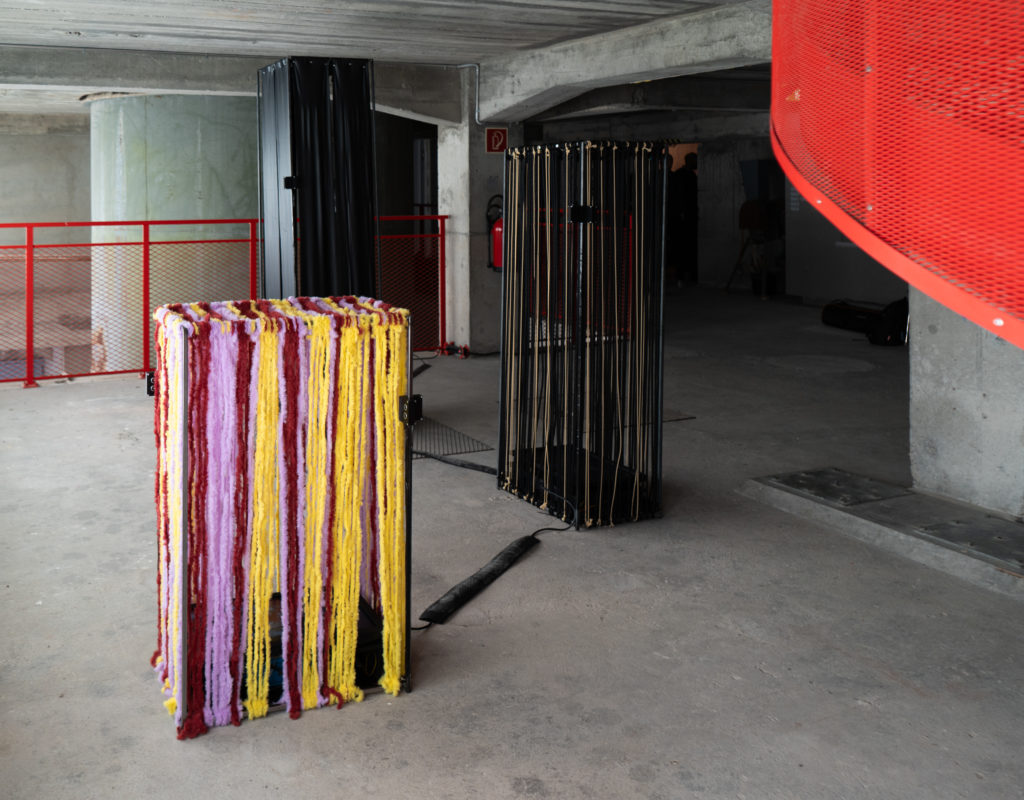
The Exhibition

ex_saceba_1
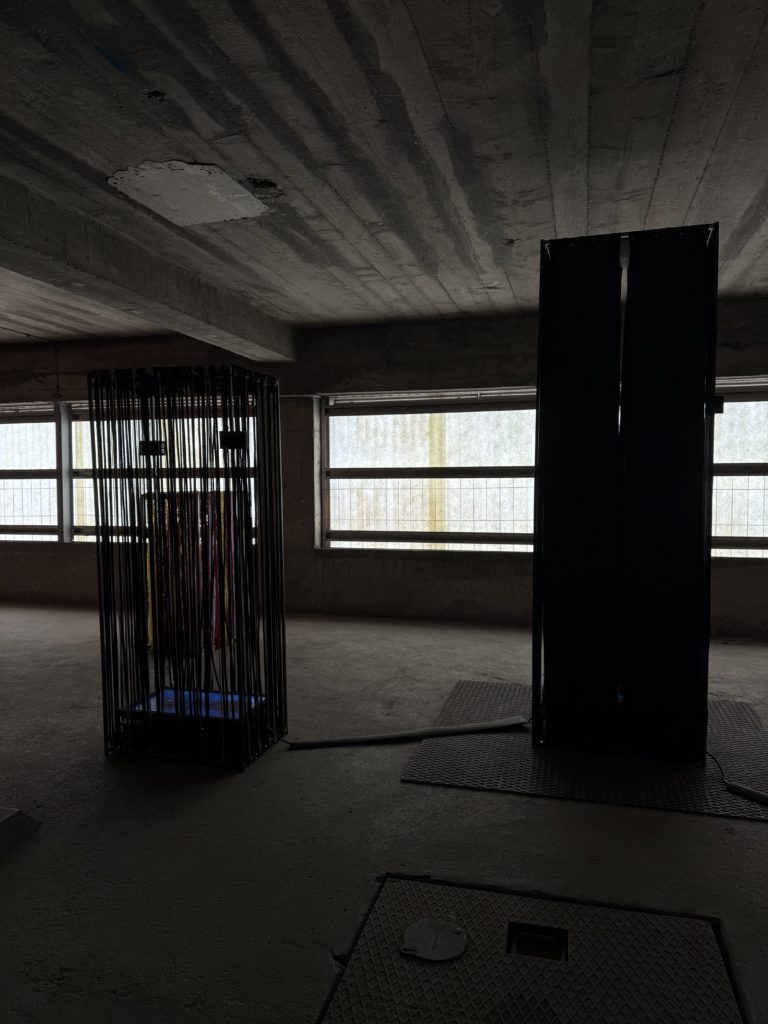
ex_saceba_4
ex_saceba_2
ex_saceba_3
Resources
- https://www.gabrielegalimberti.com/projects/
- https://www.weirdal.com/archives/
- https://www.instagram.com/syrianstampsarchive/
- https://grafisnusantara.com/
- https://www.itsnicethat.com/
- https://arenophile.fr/
- https://edition.cnn.com/travel/article/hotel-do-not-disturb-signs-collection/index.html
- https://www.horg.com/horg/?page_id=2
- https://www.stevedietgoedde.com/books_and_prints__beauty_of_fetish.html
- https://www.stevedietgoedde.com/books_and_prints__beauty_of_fetish2.html